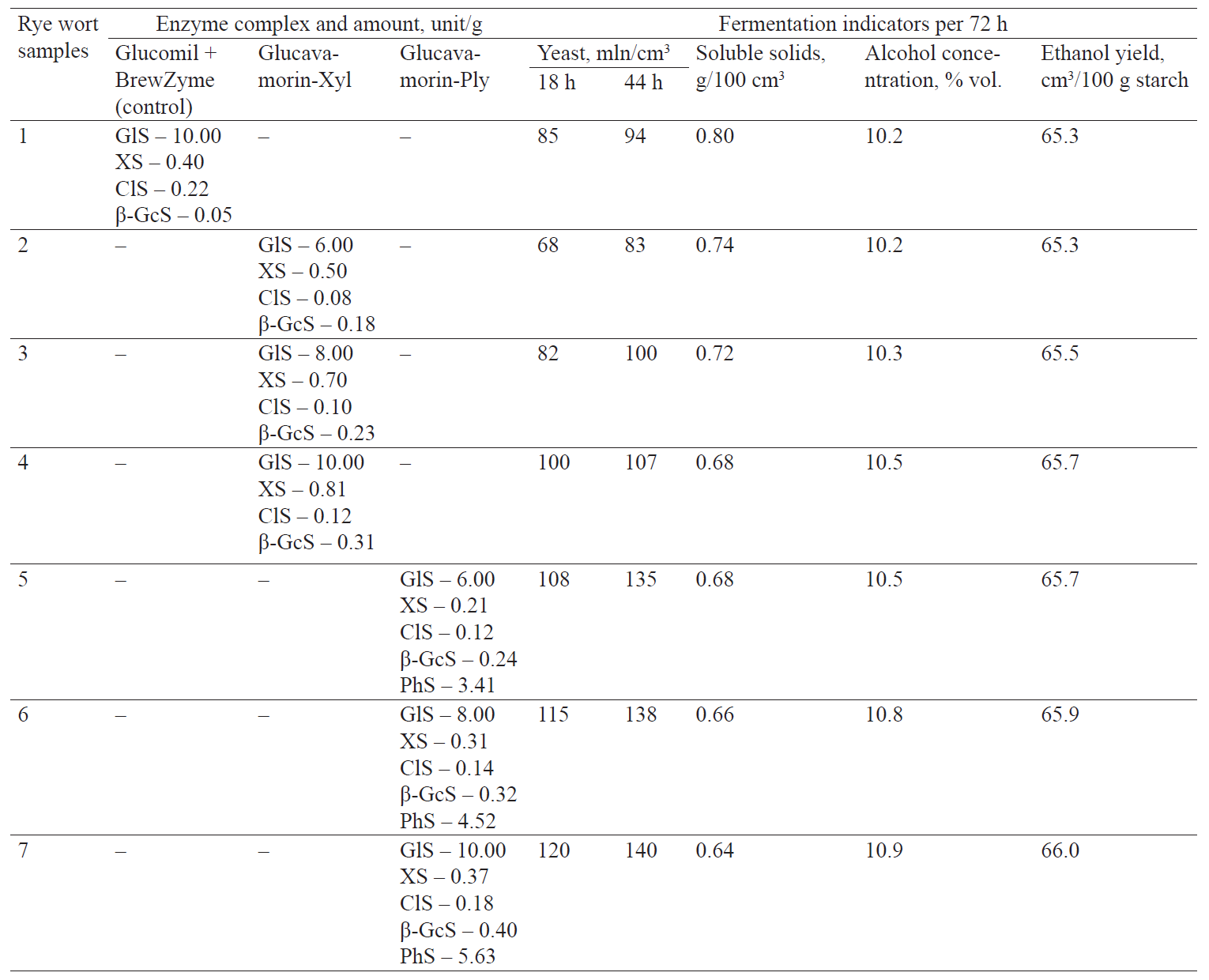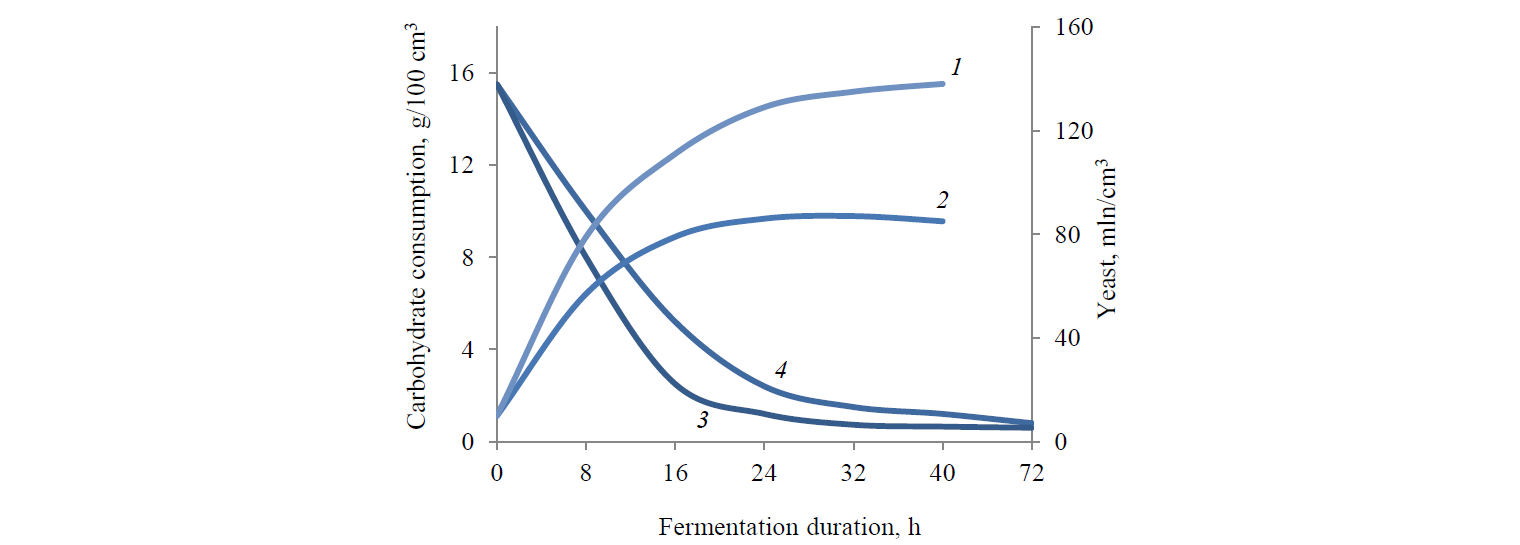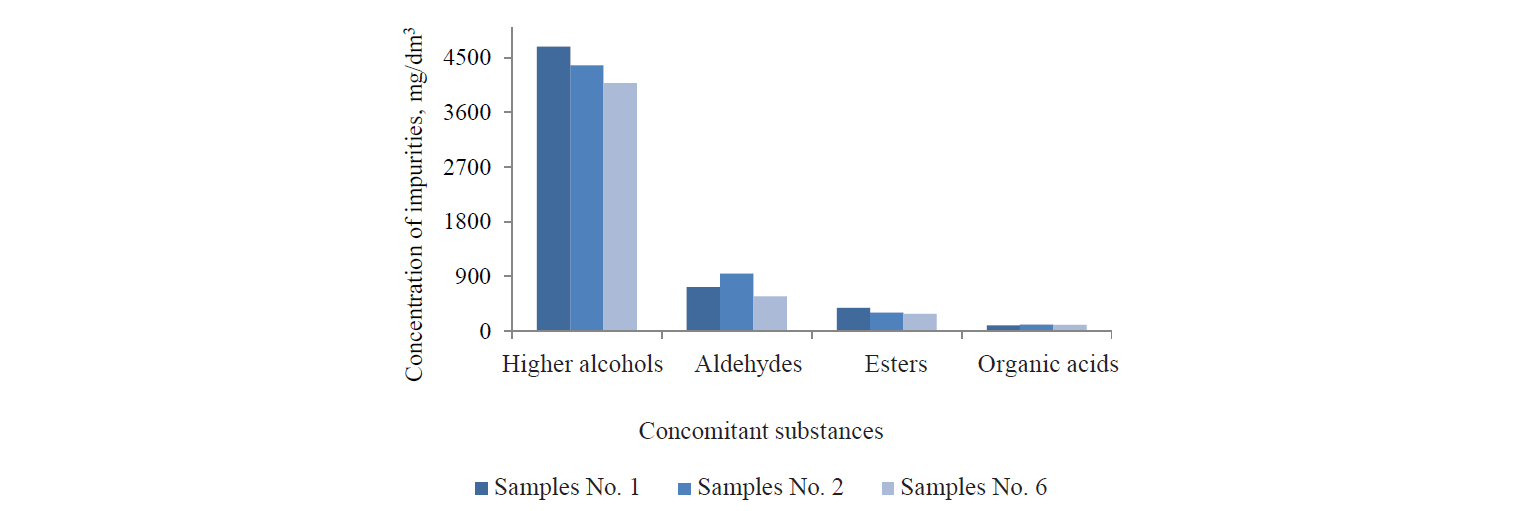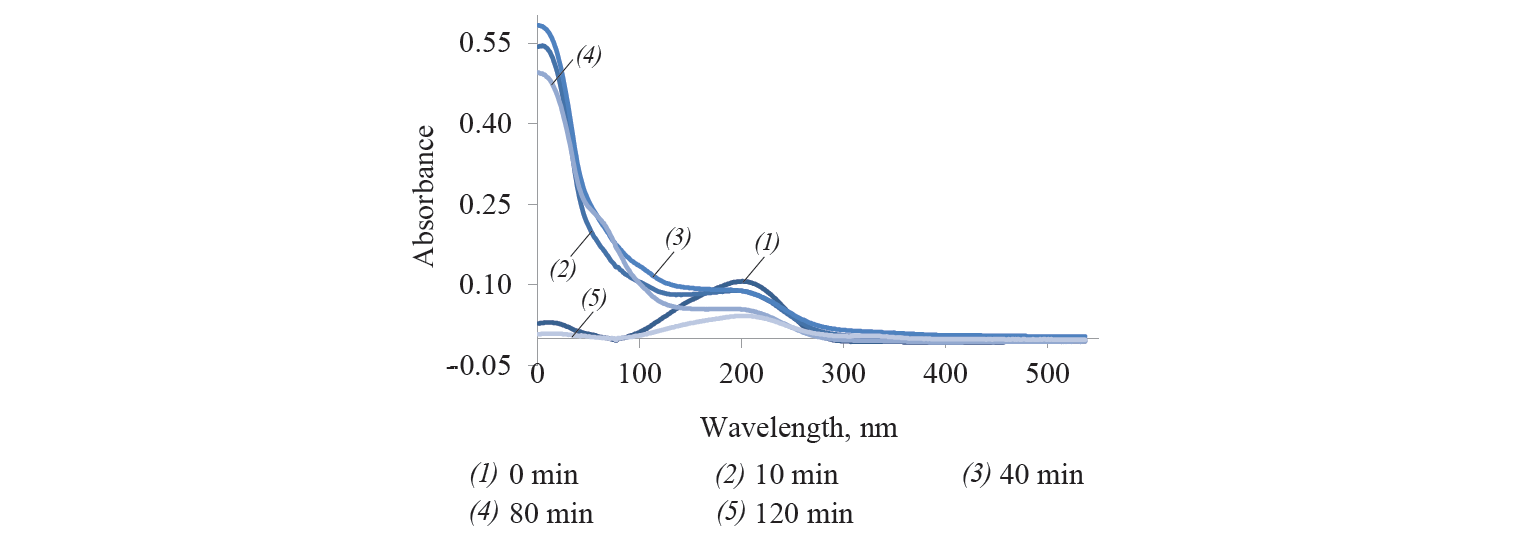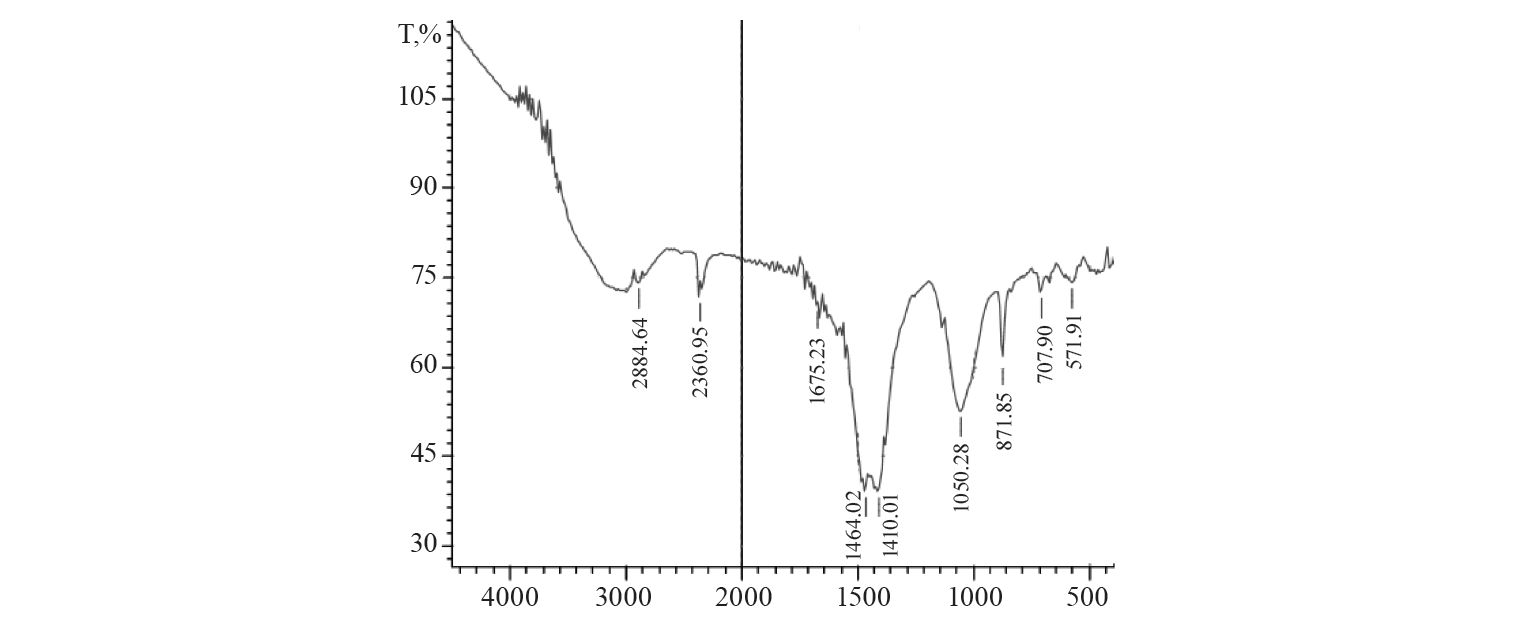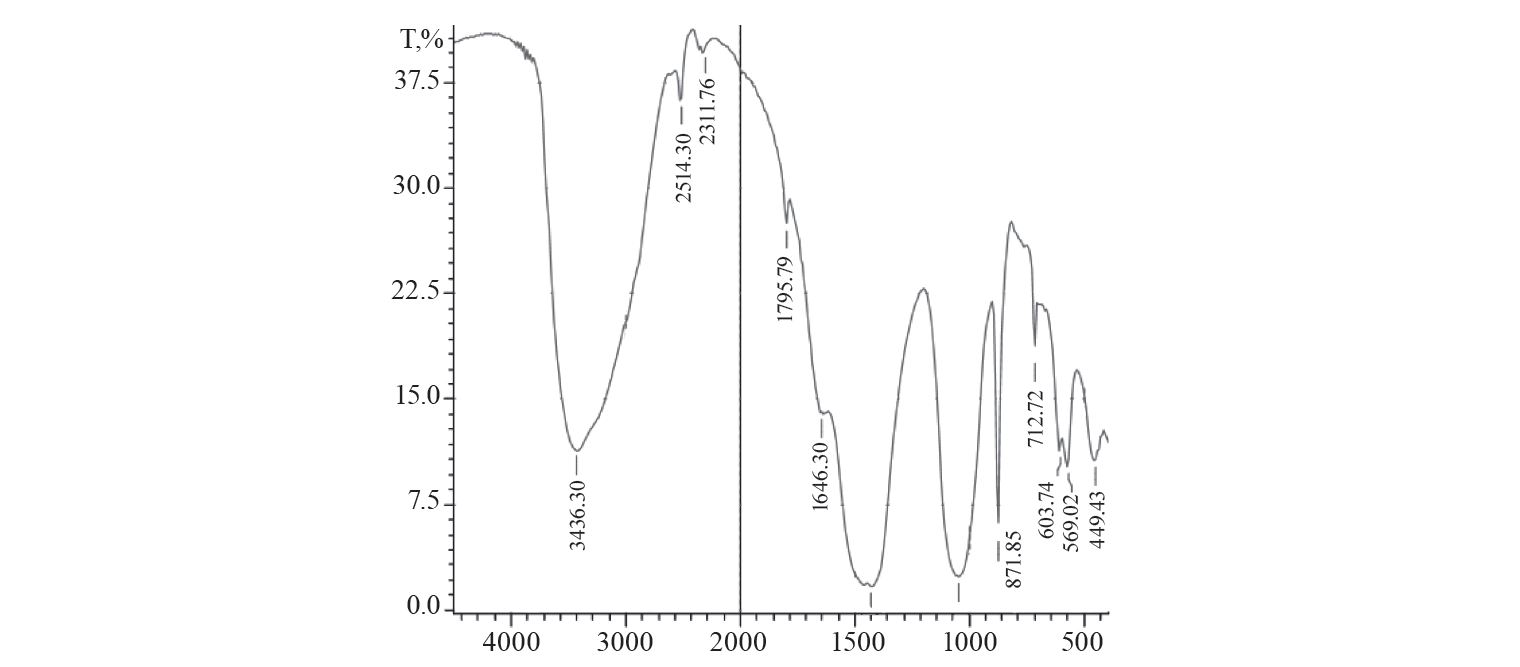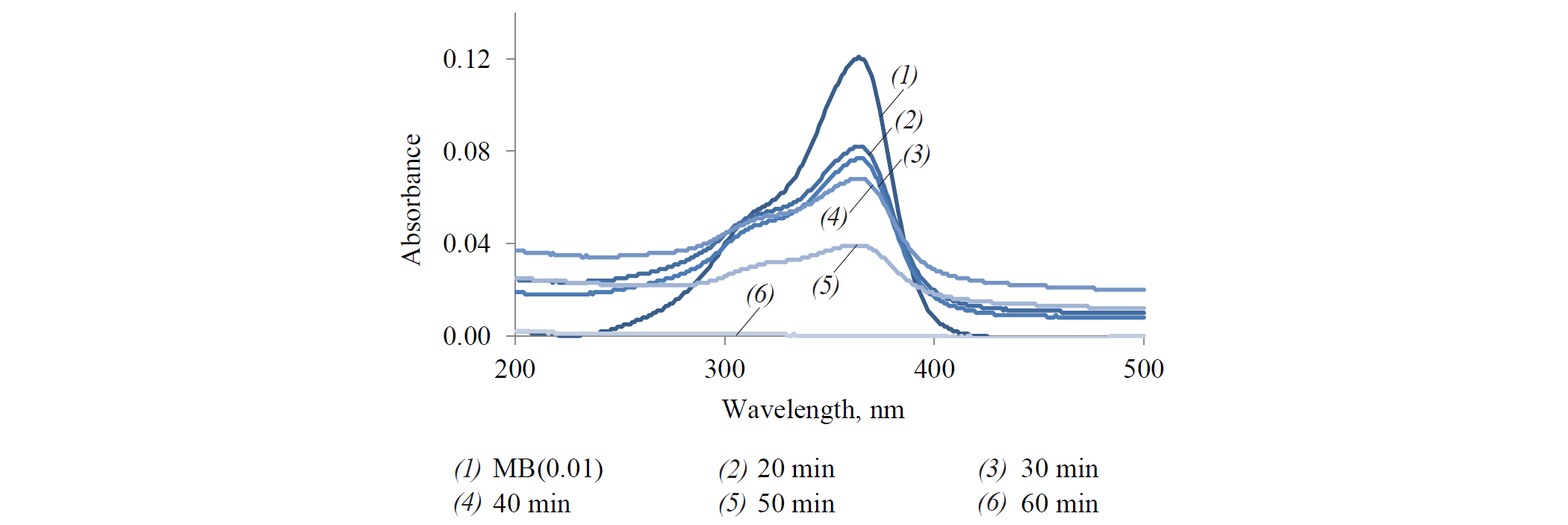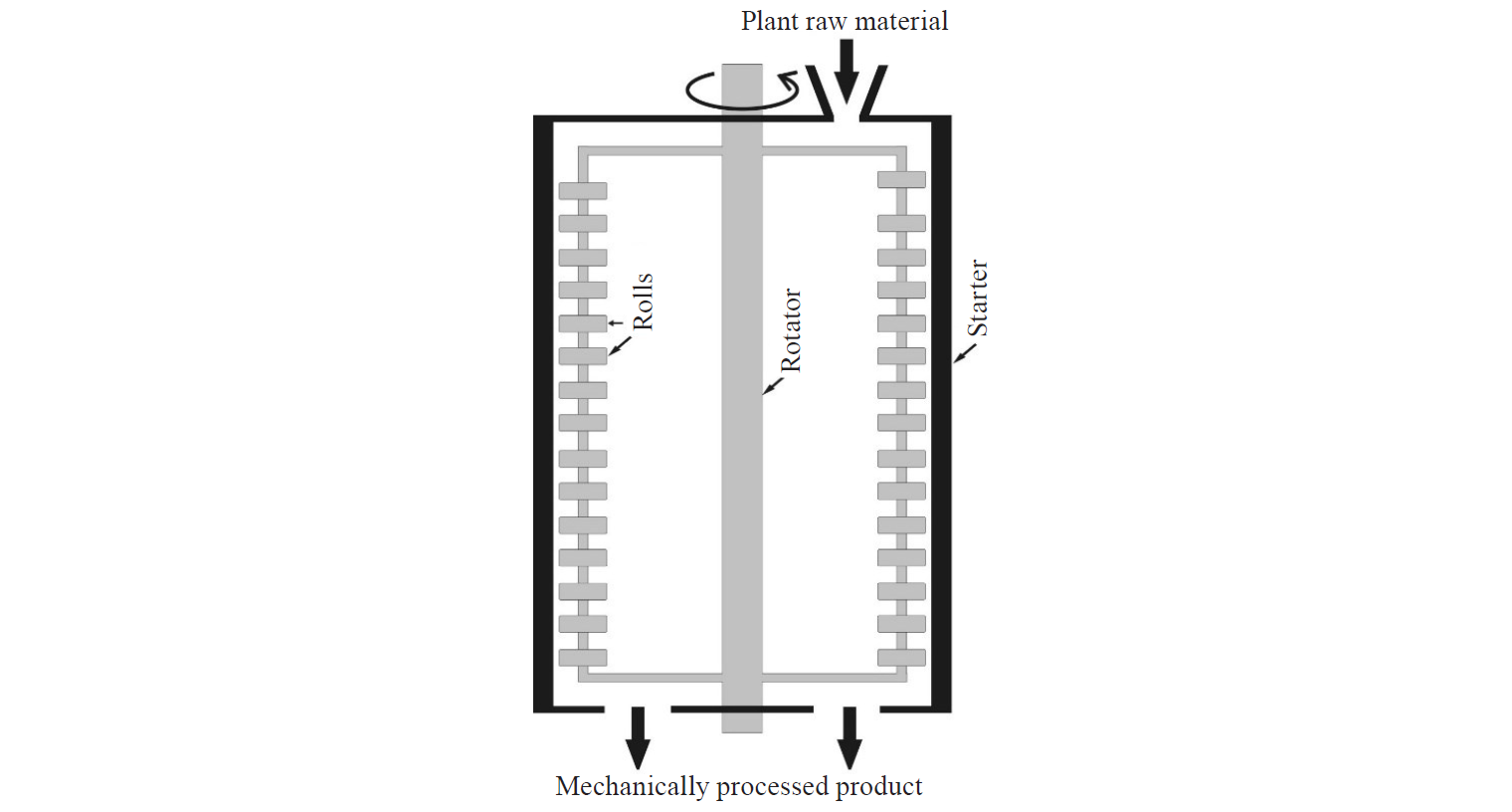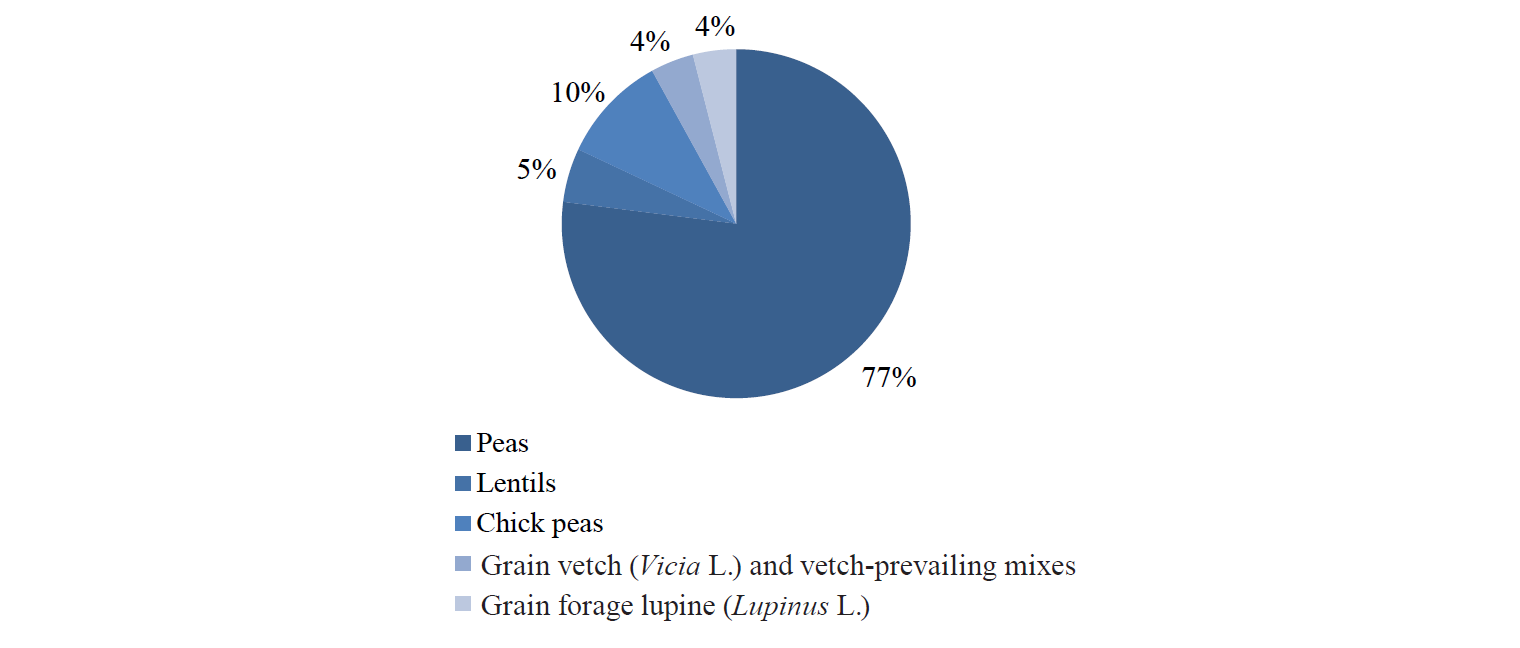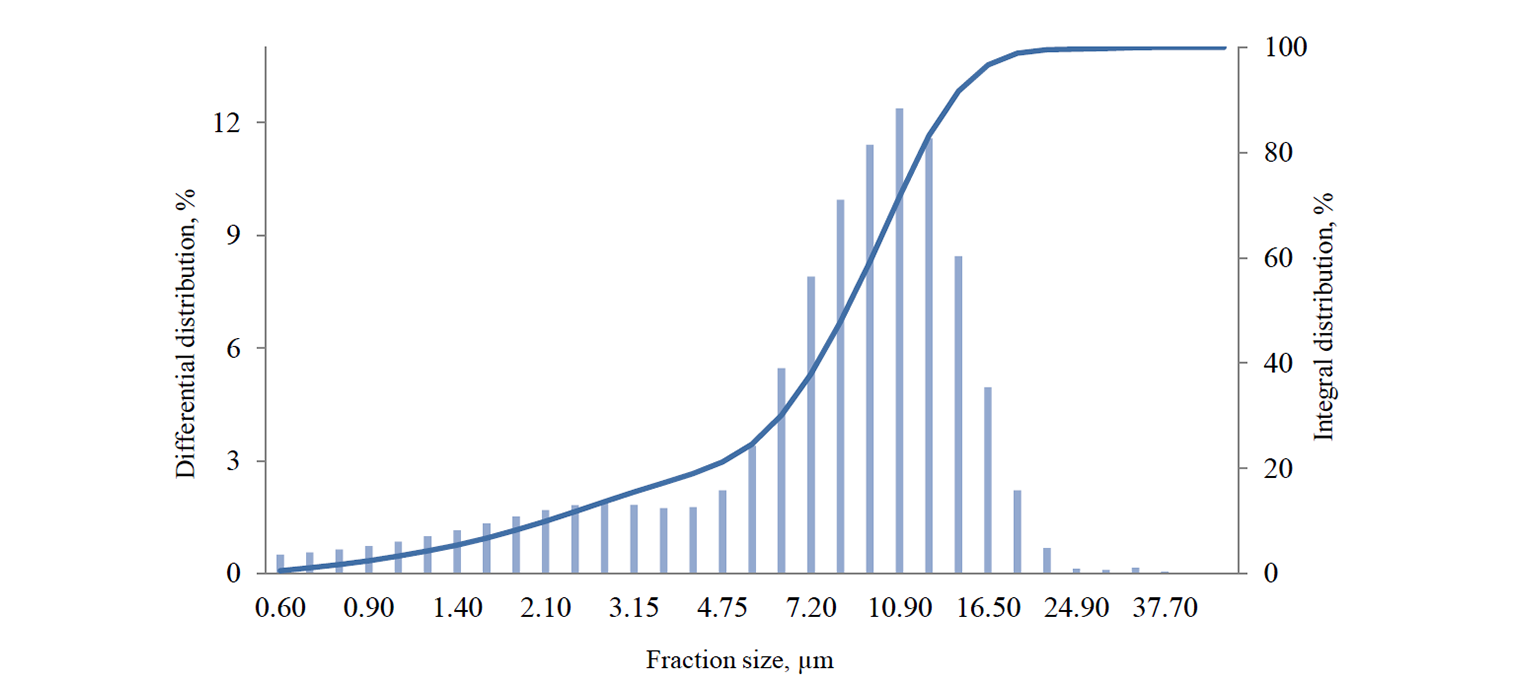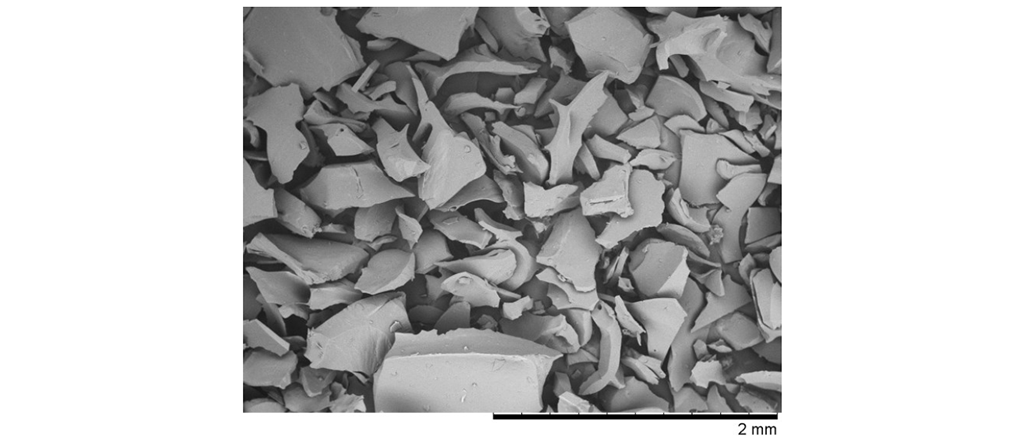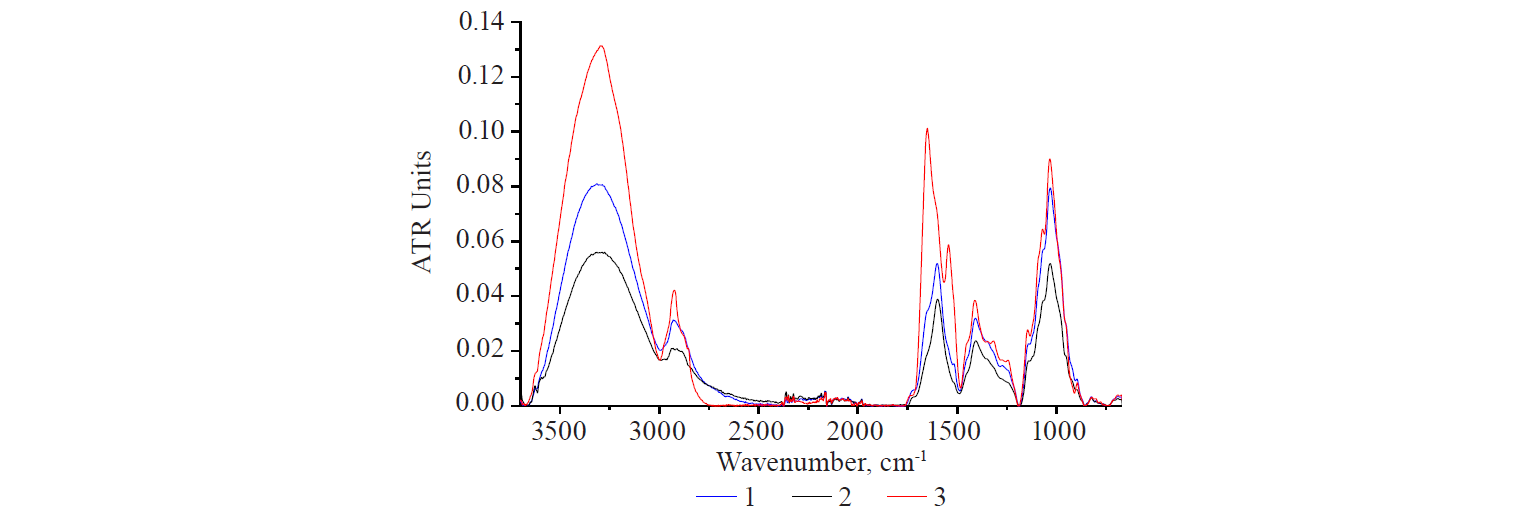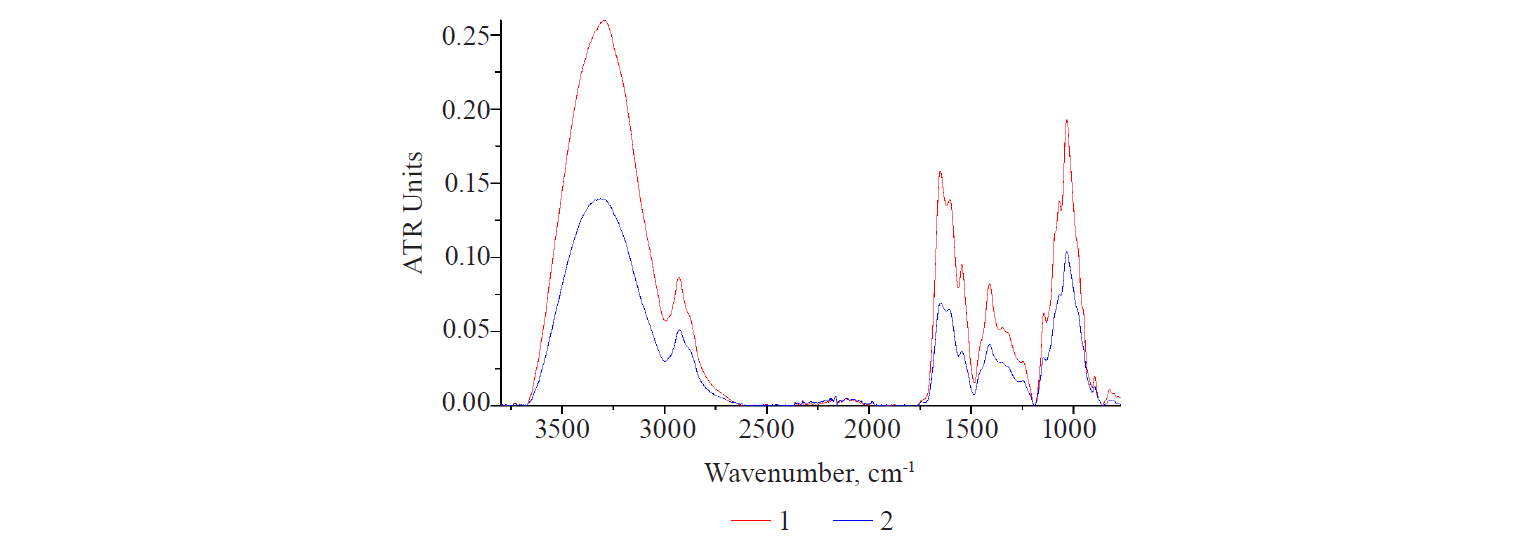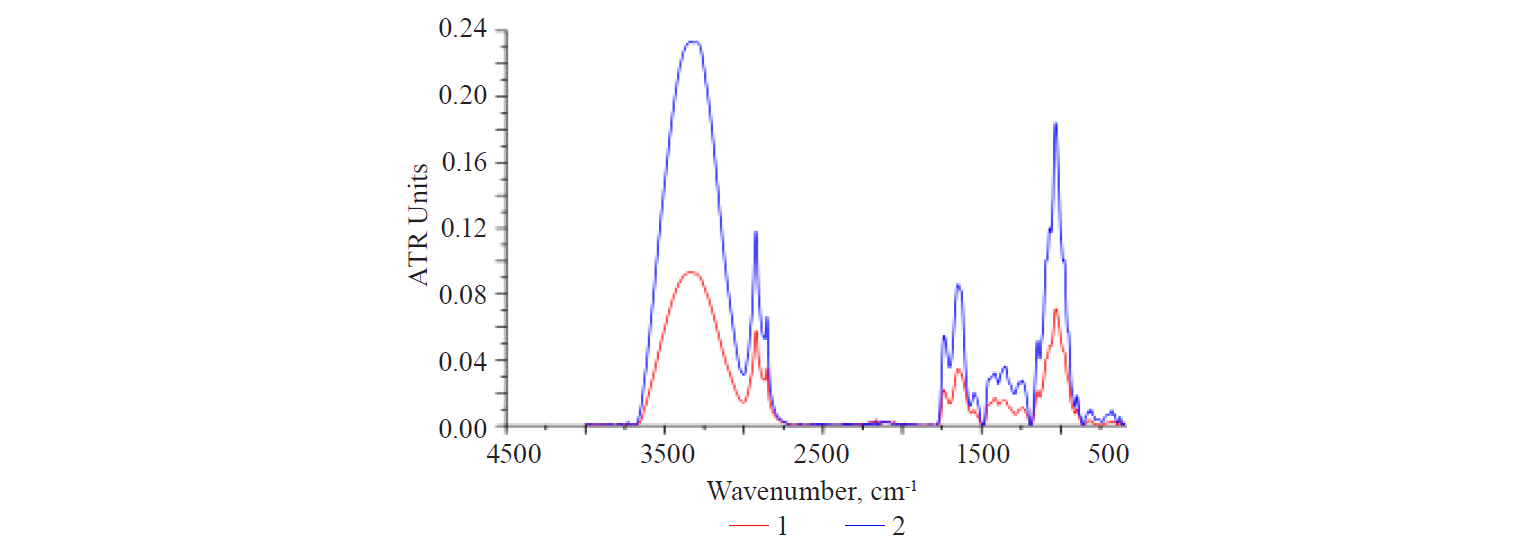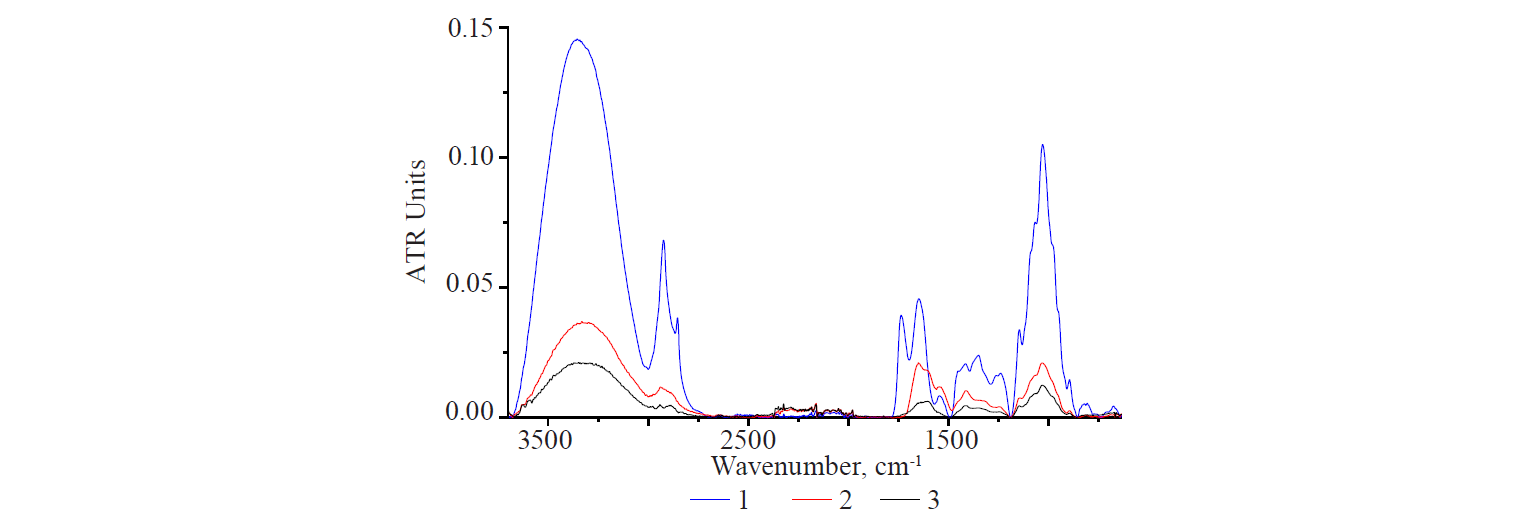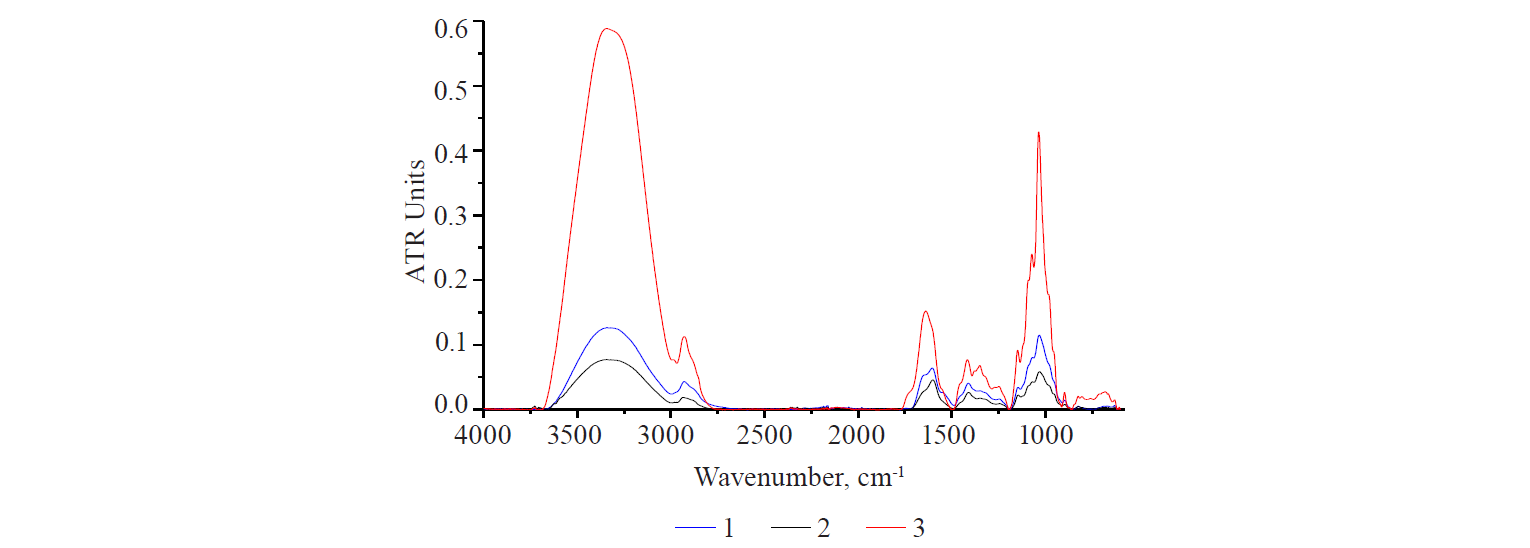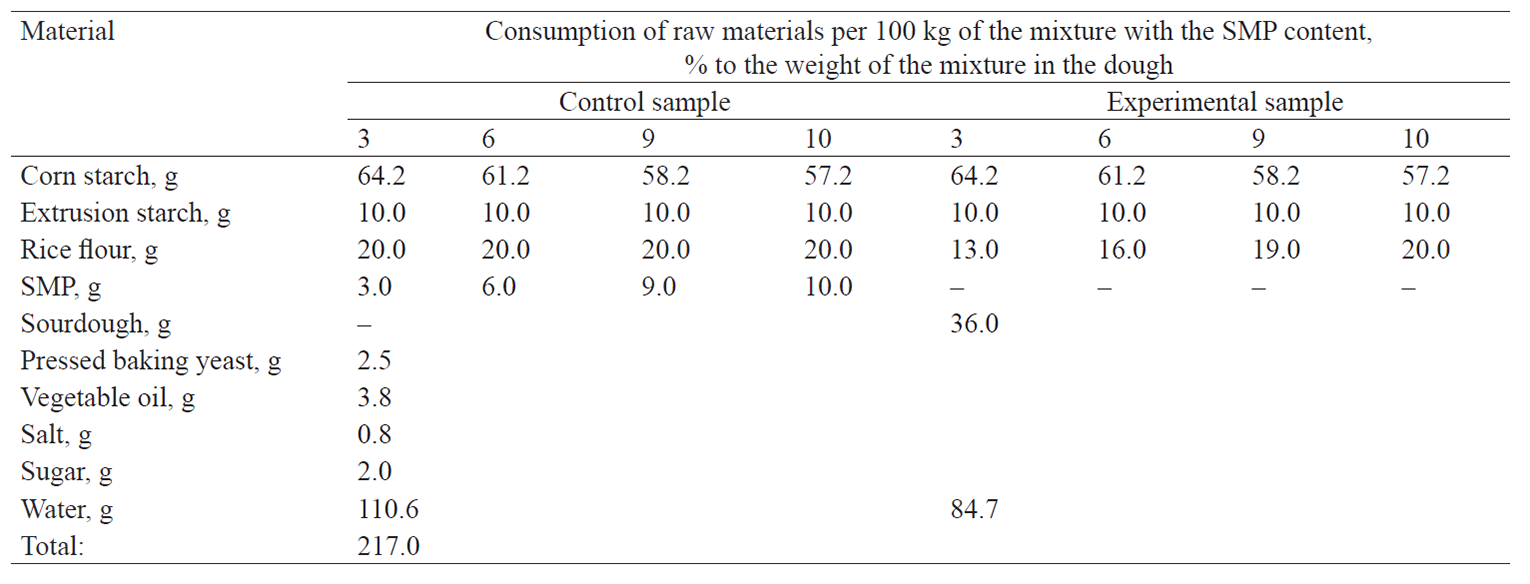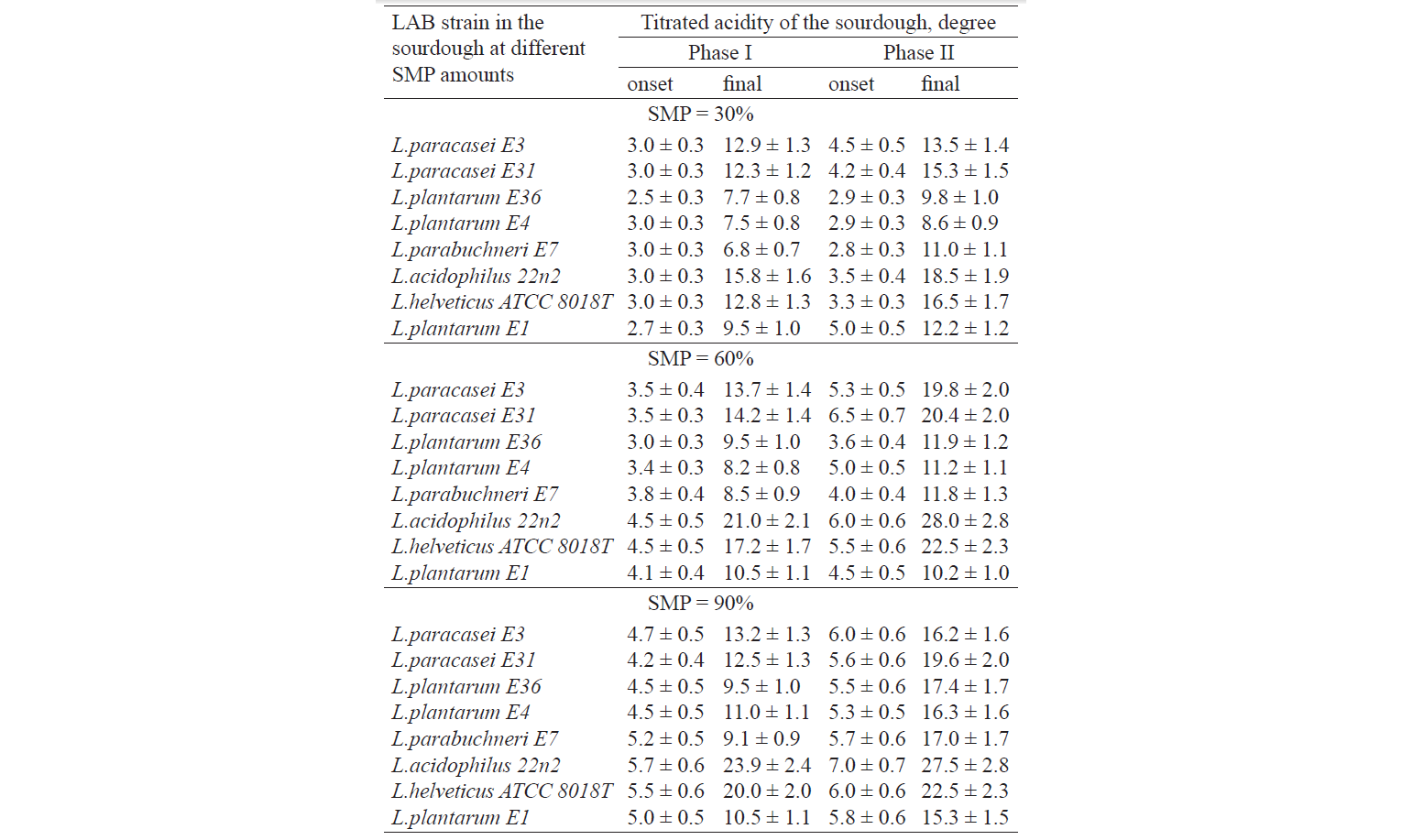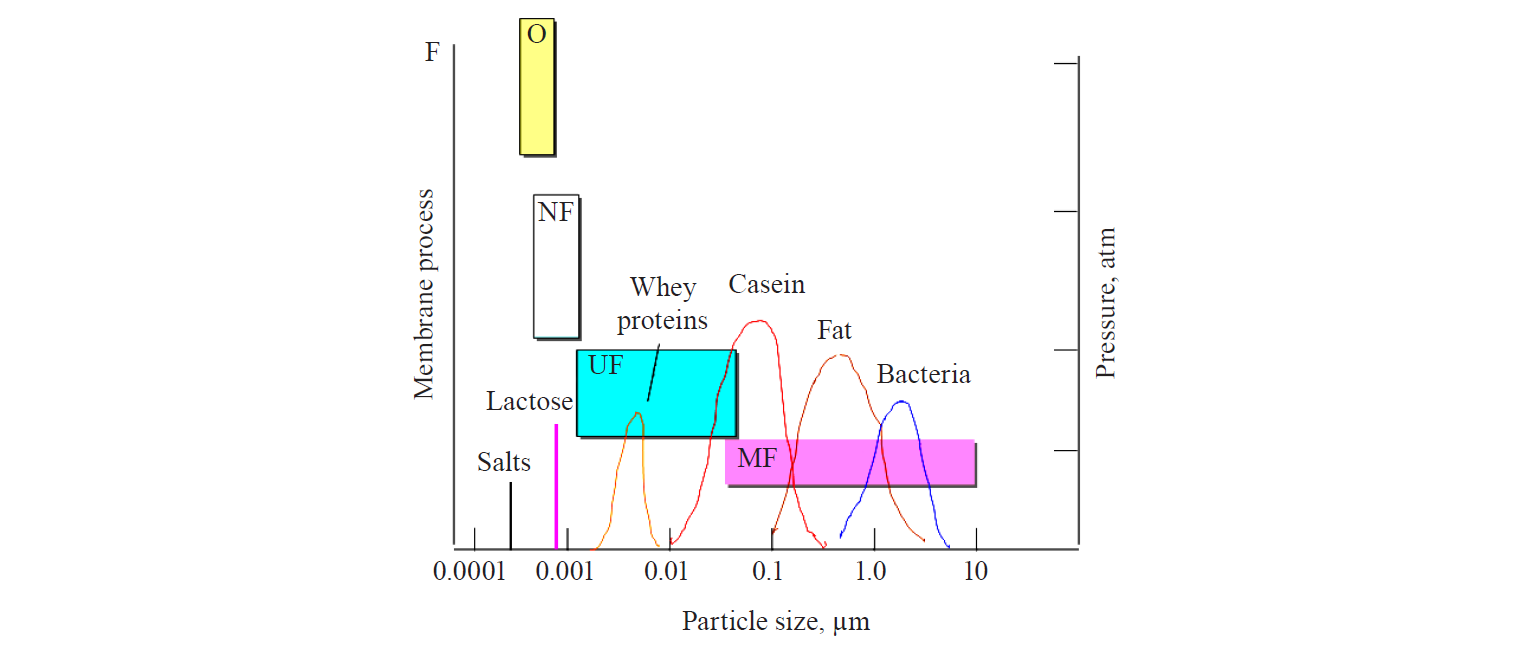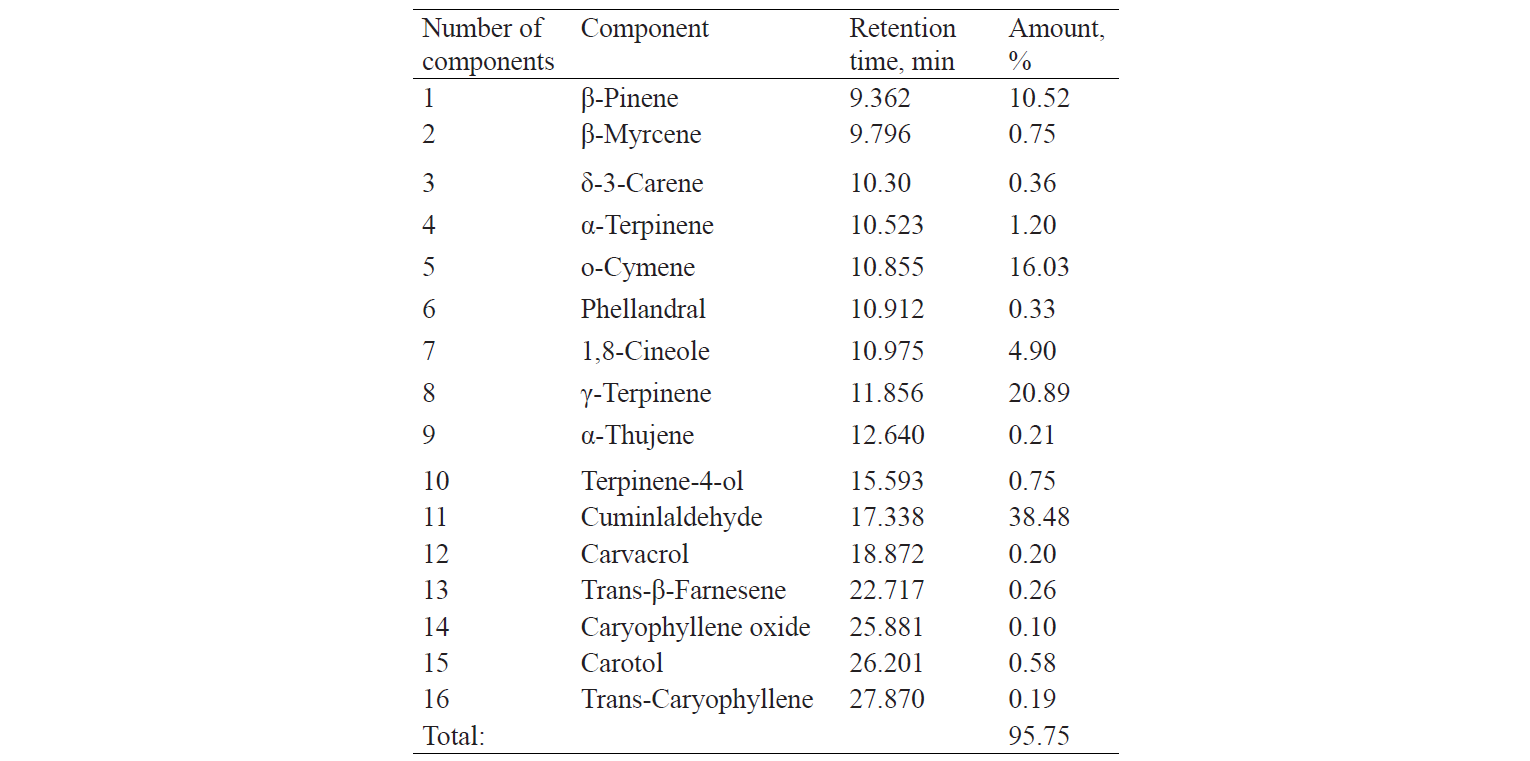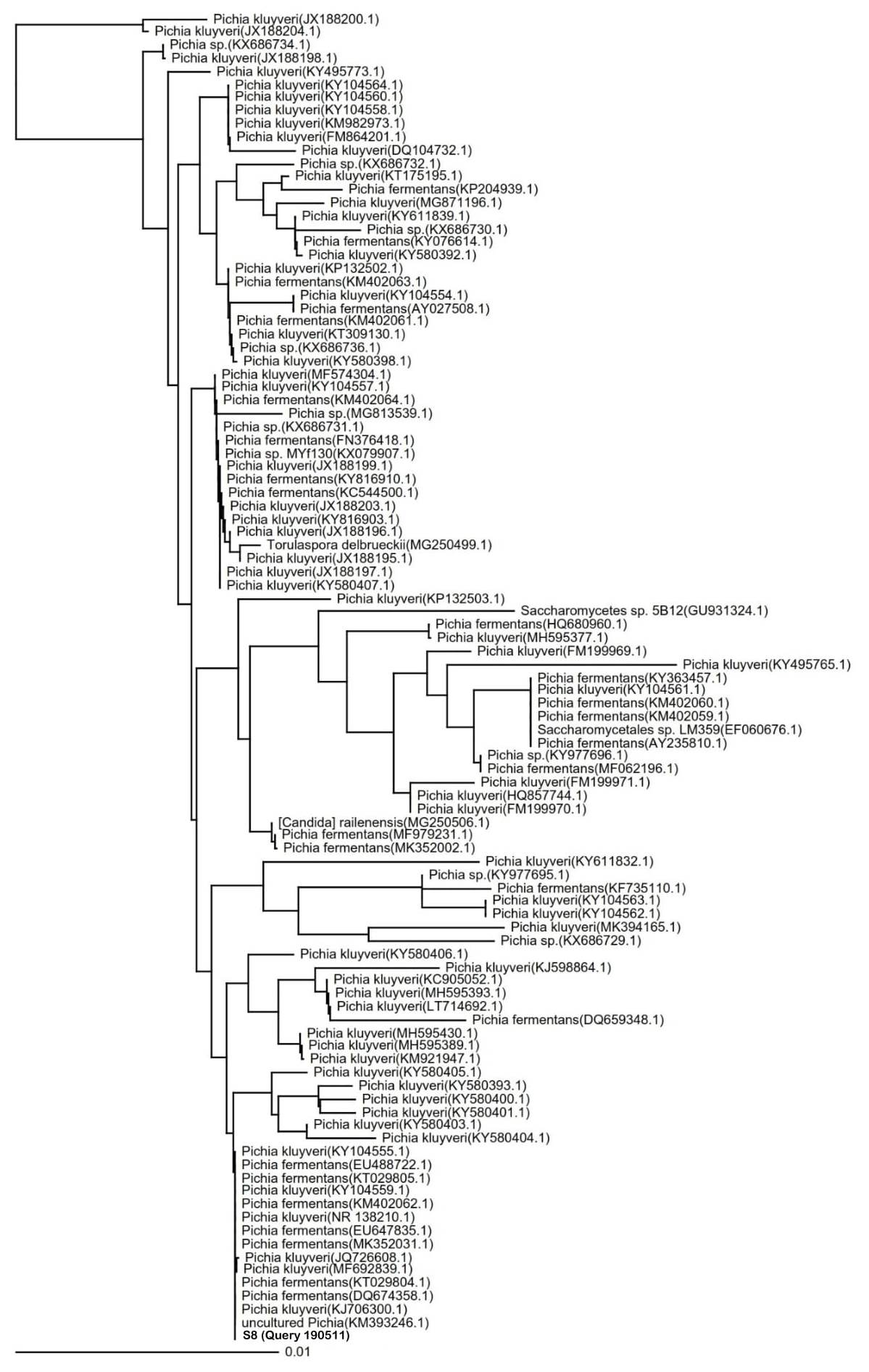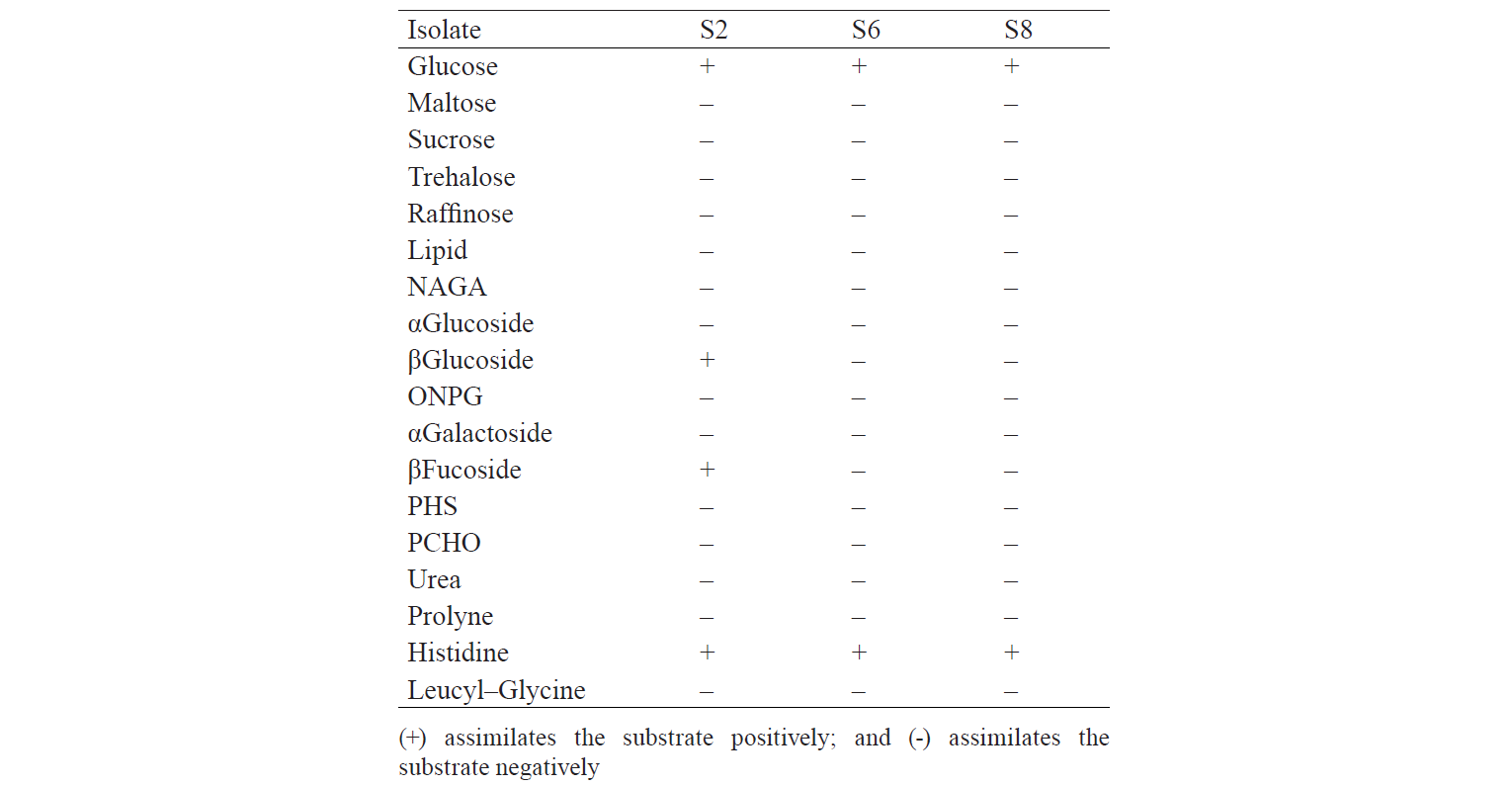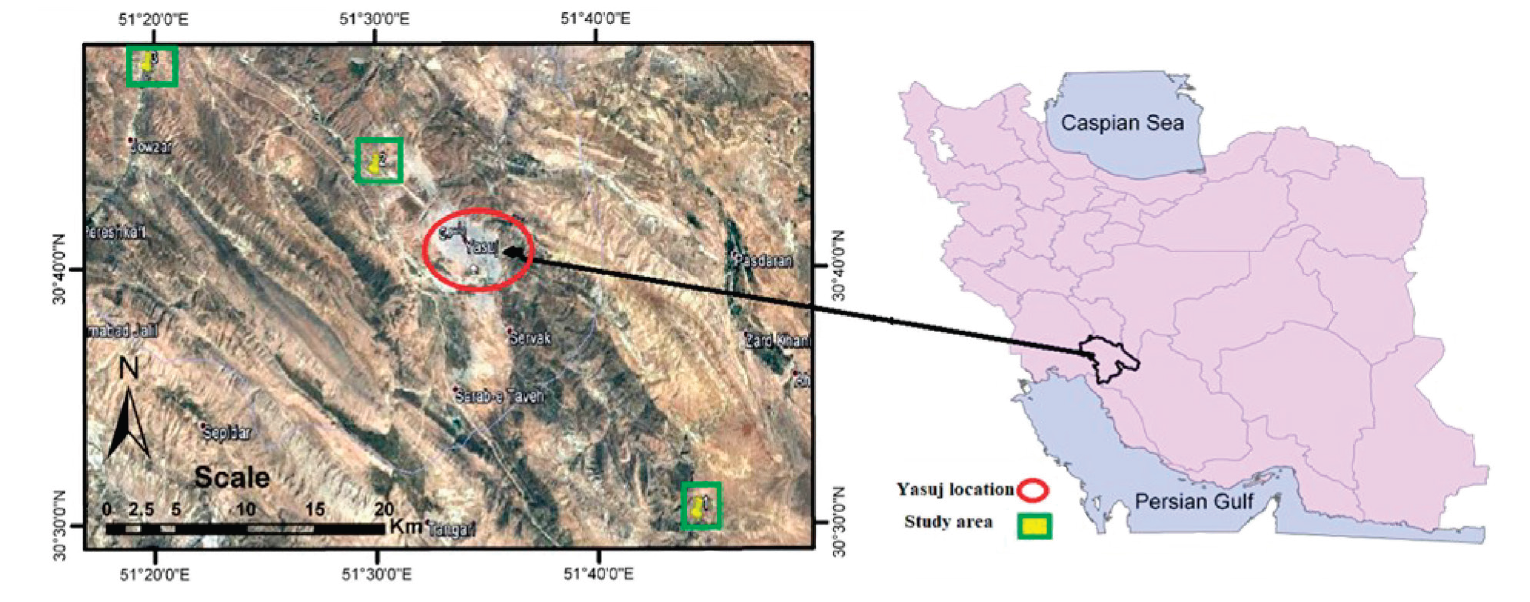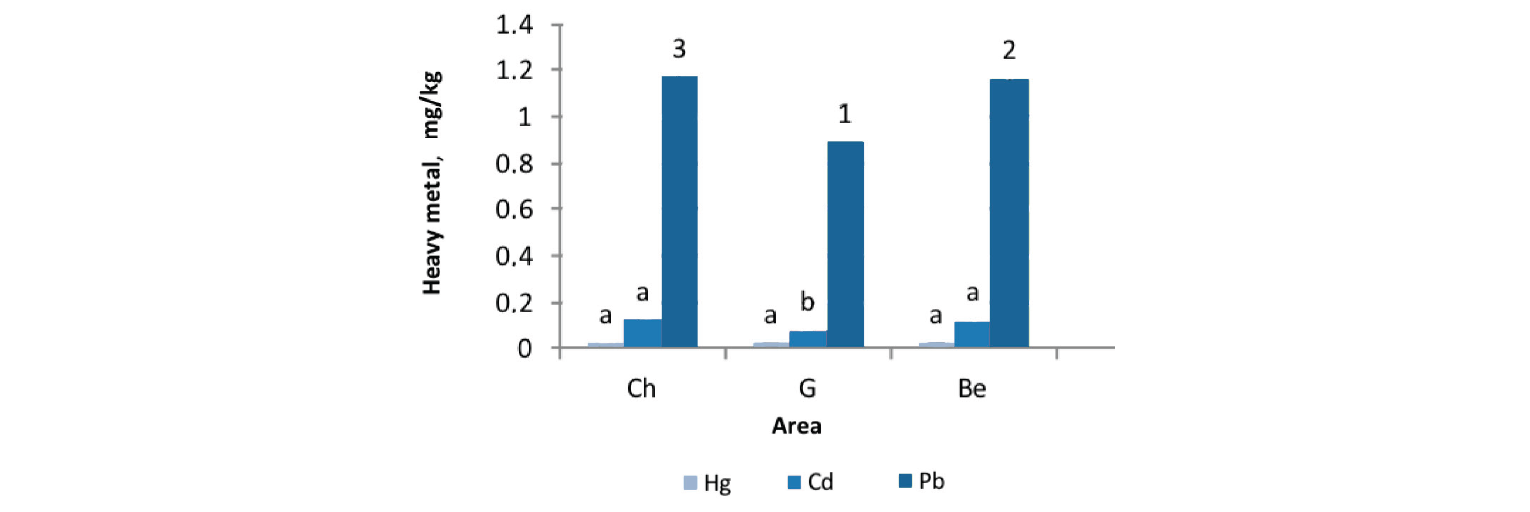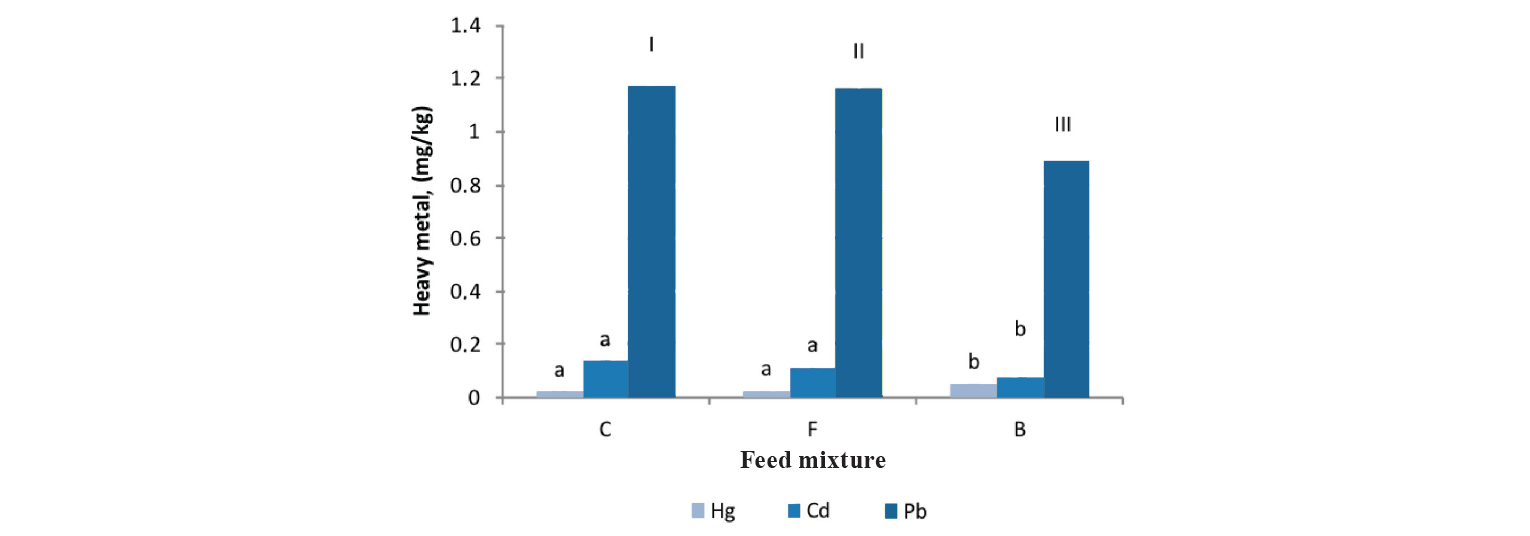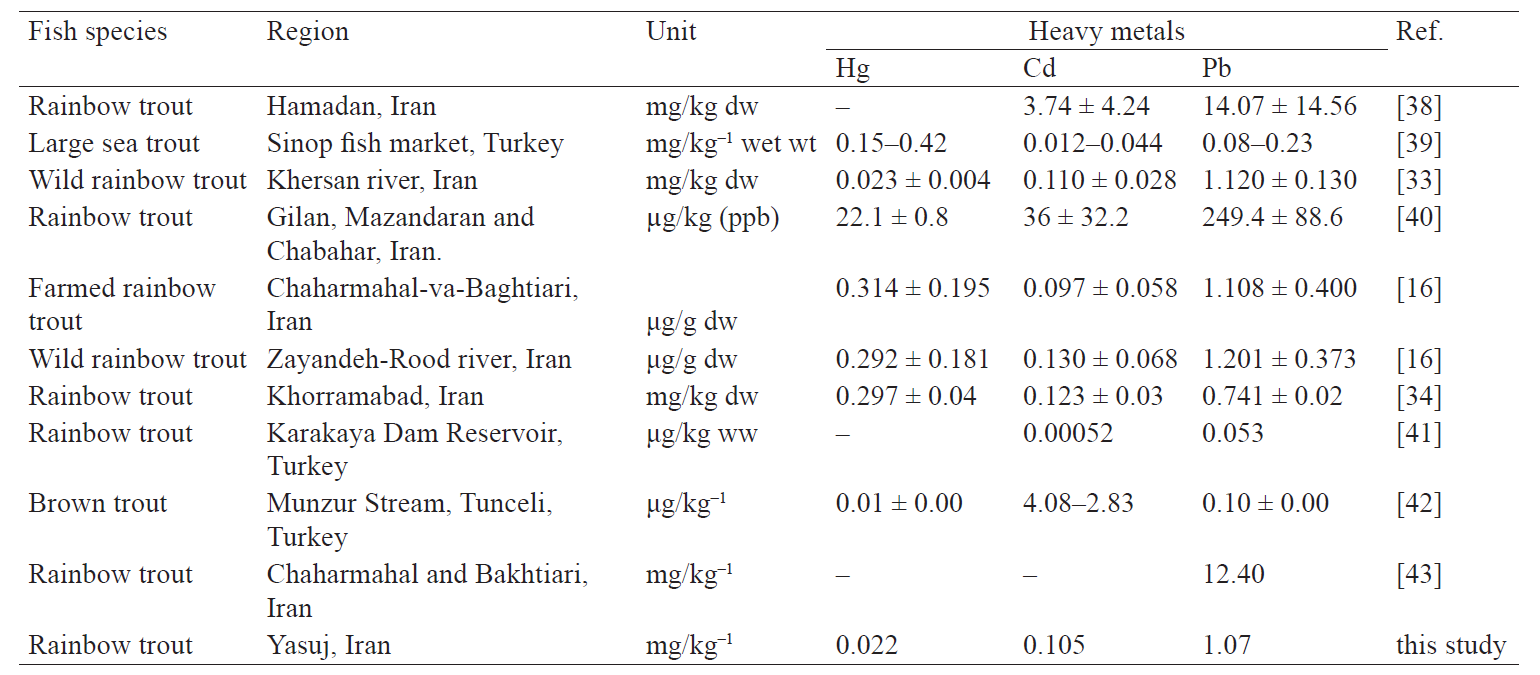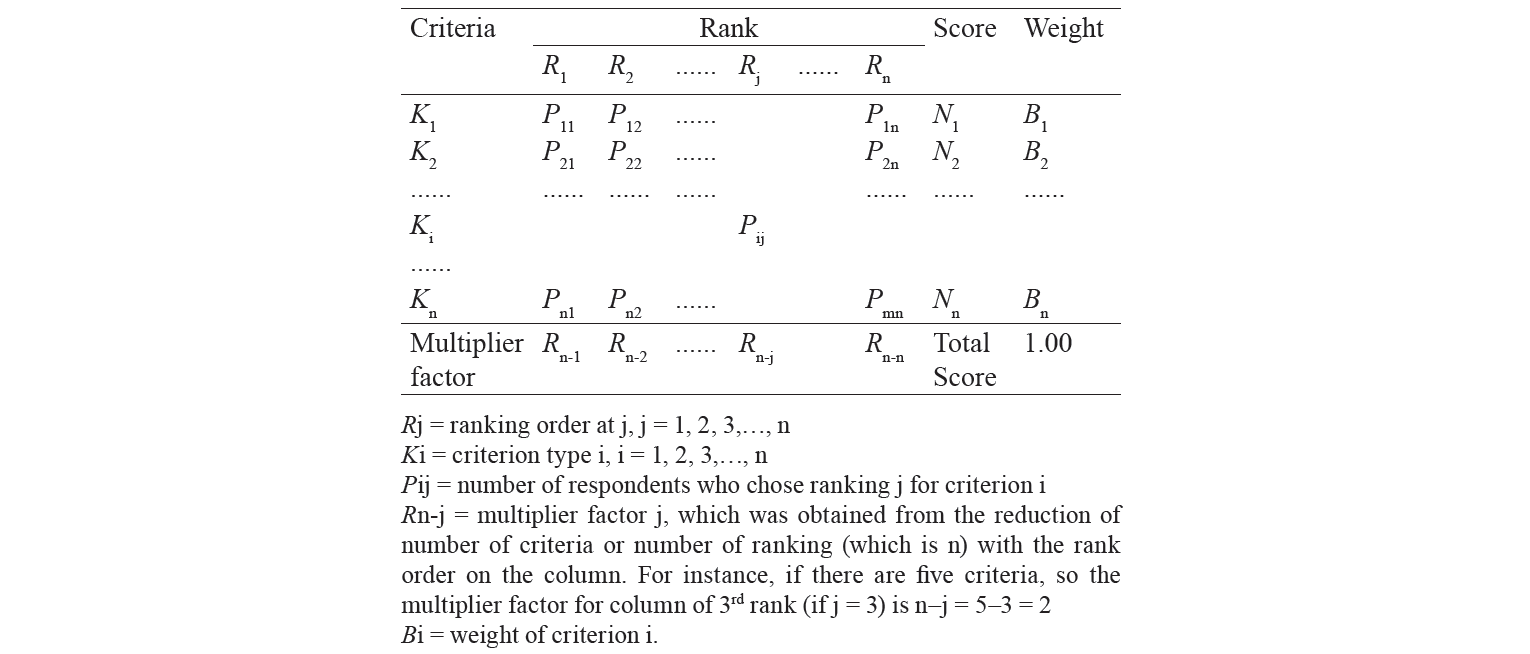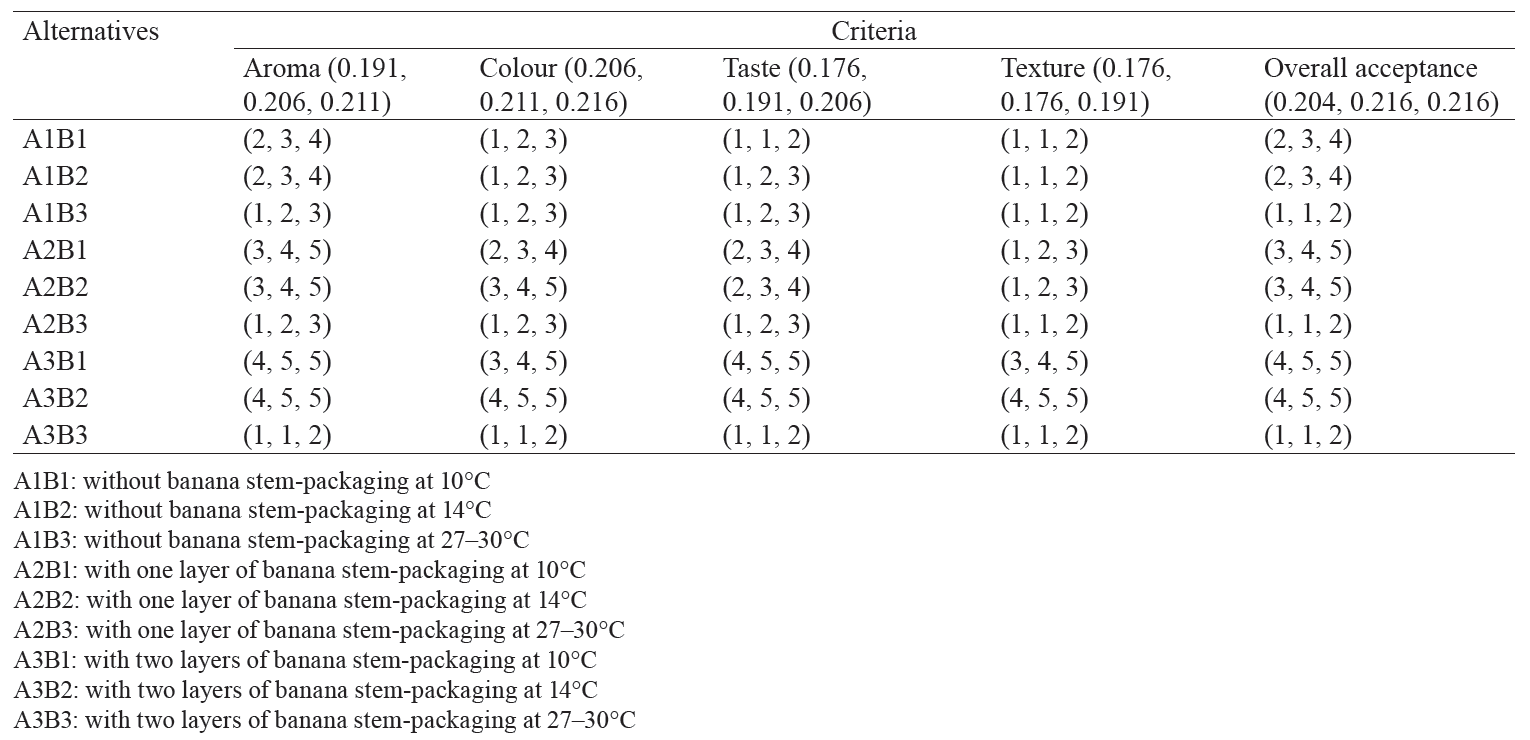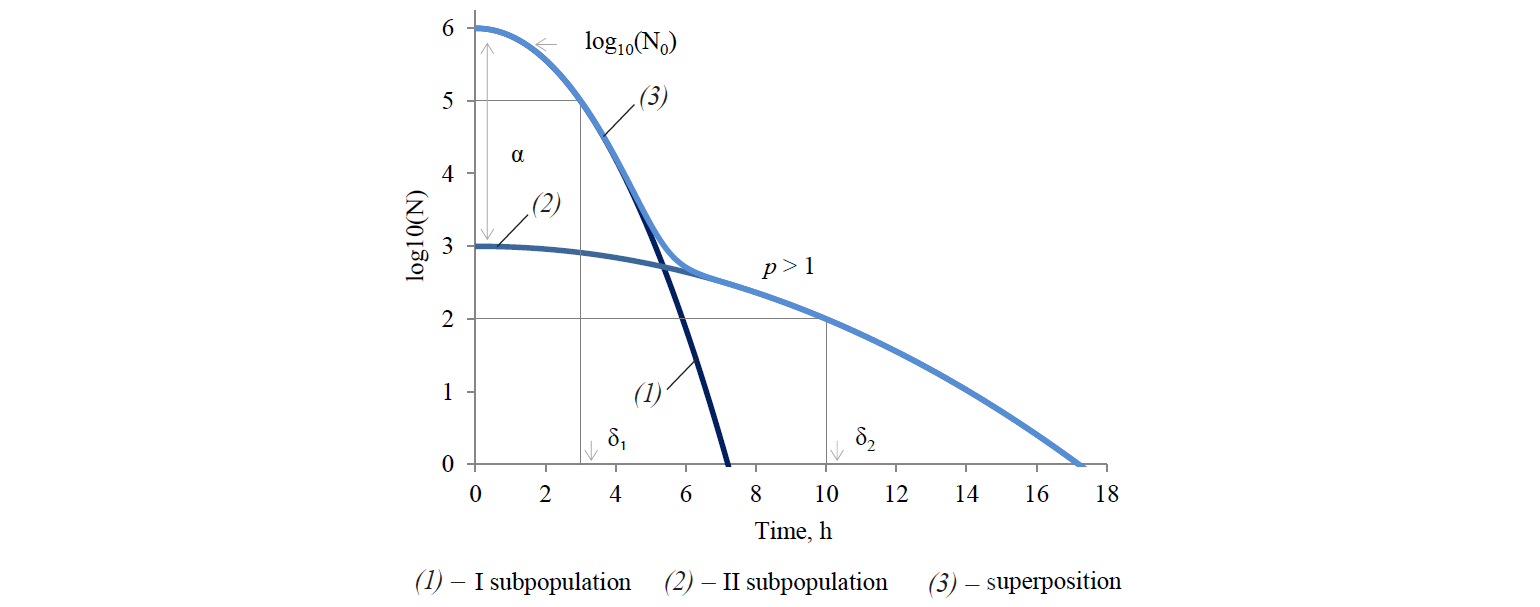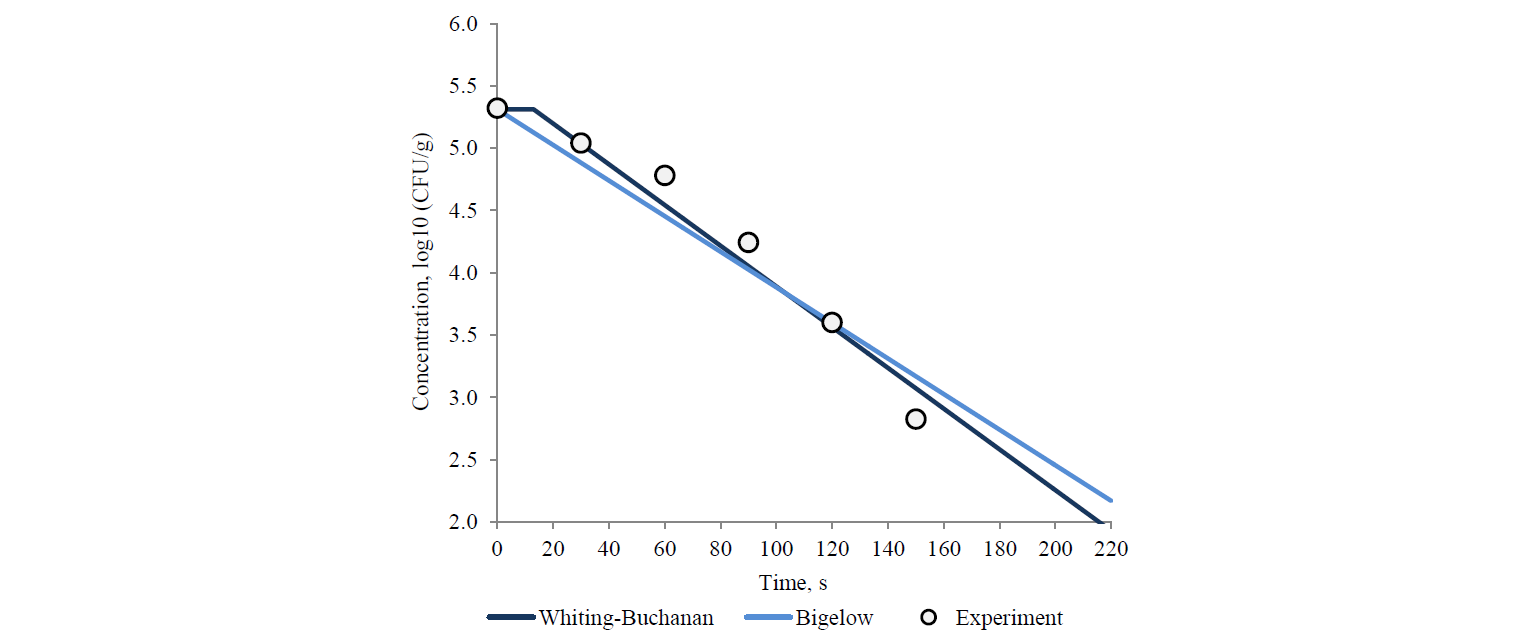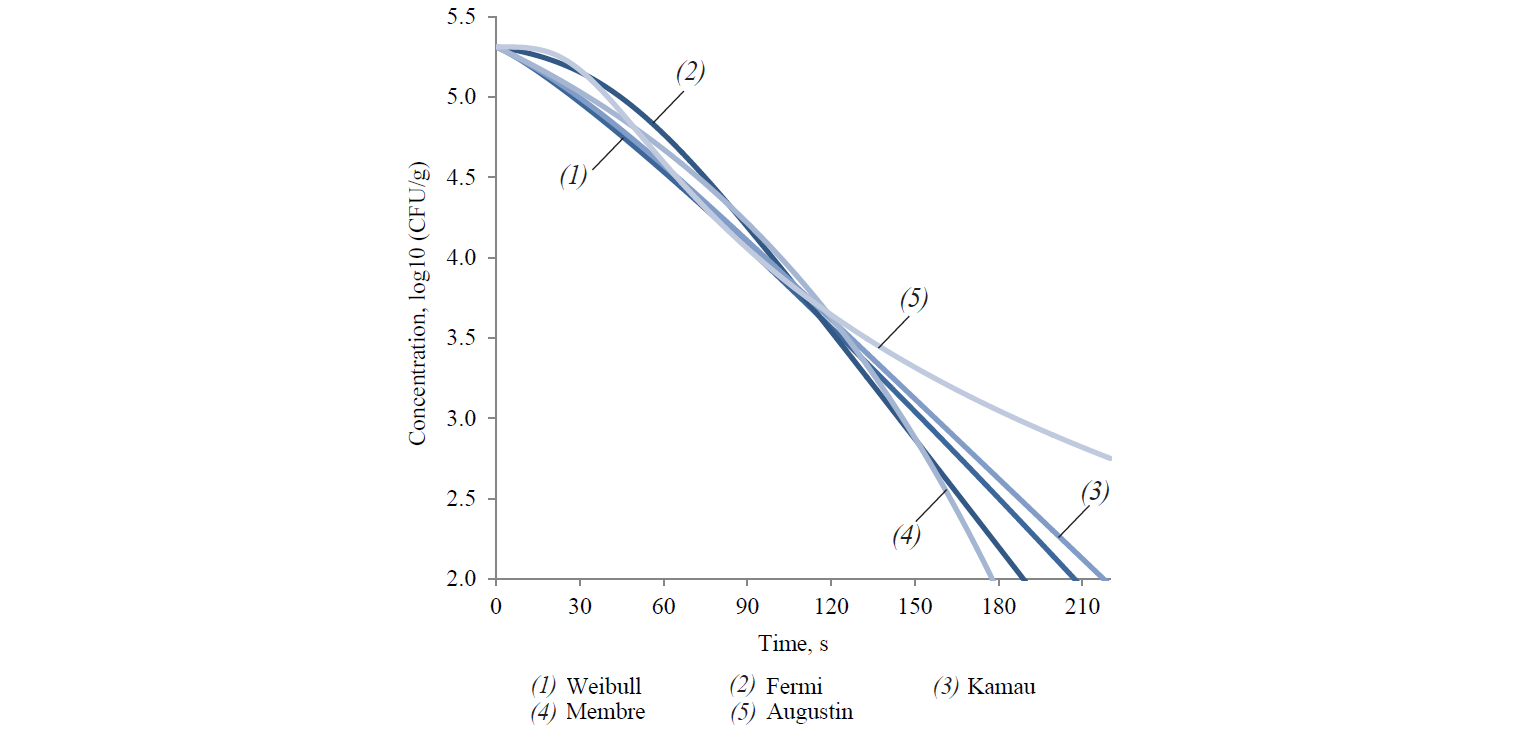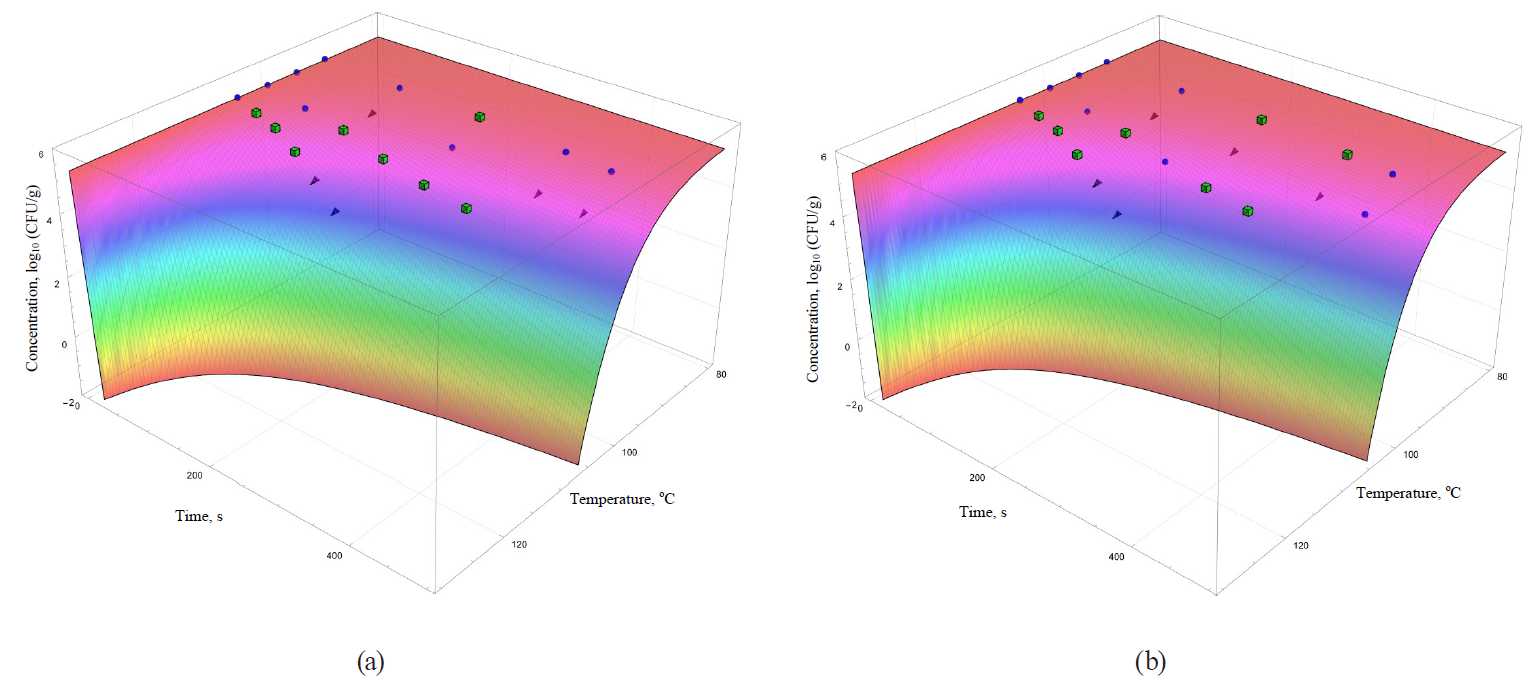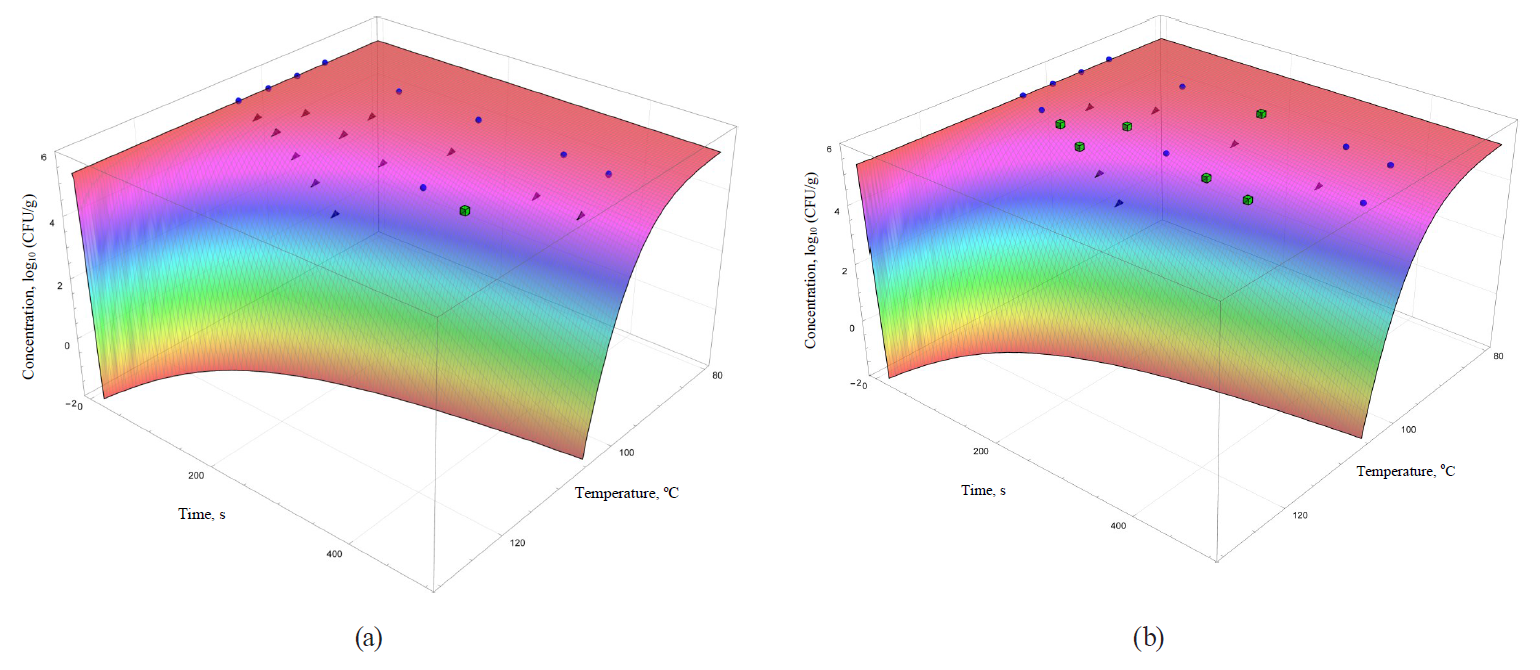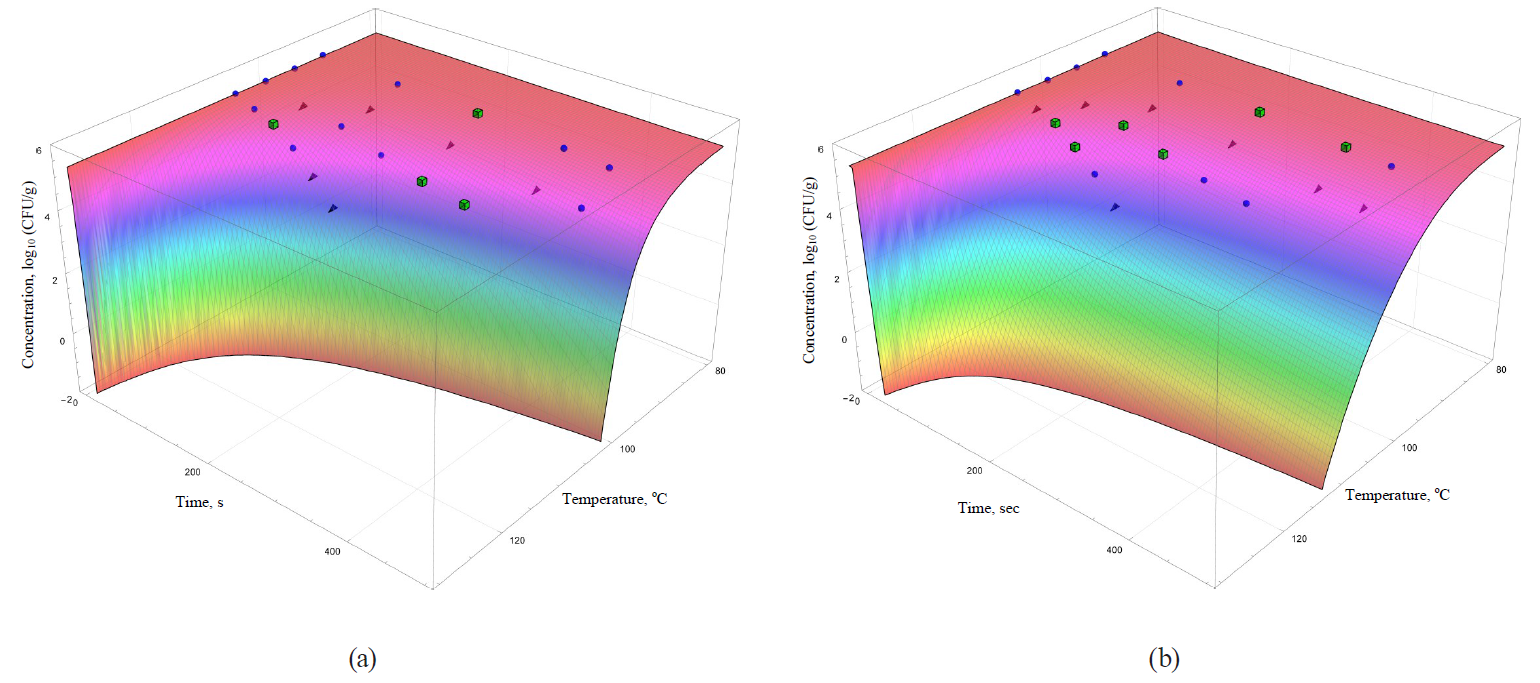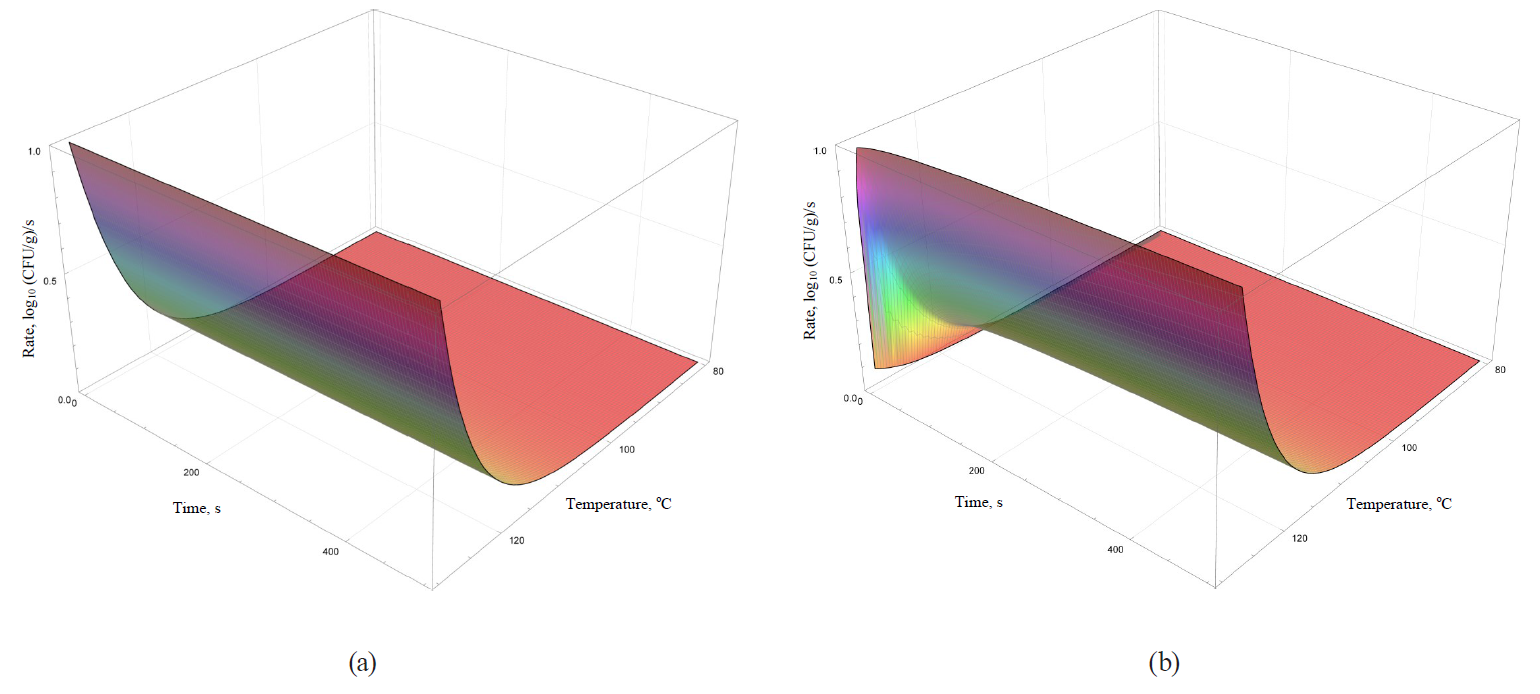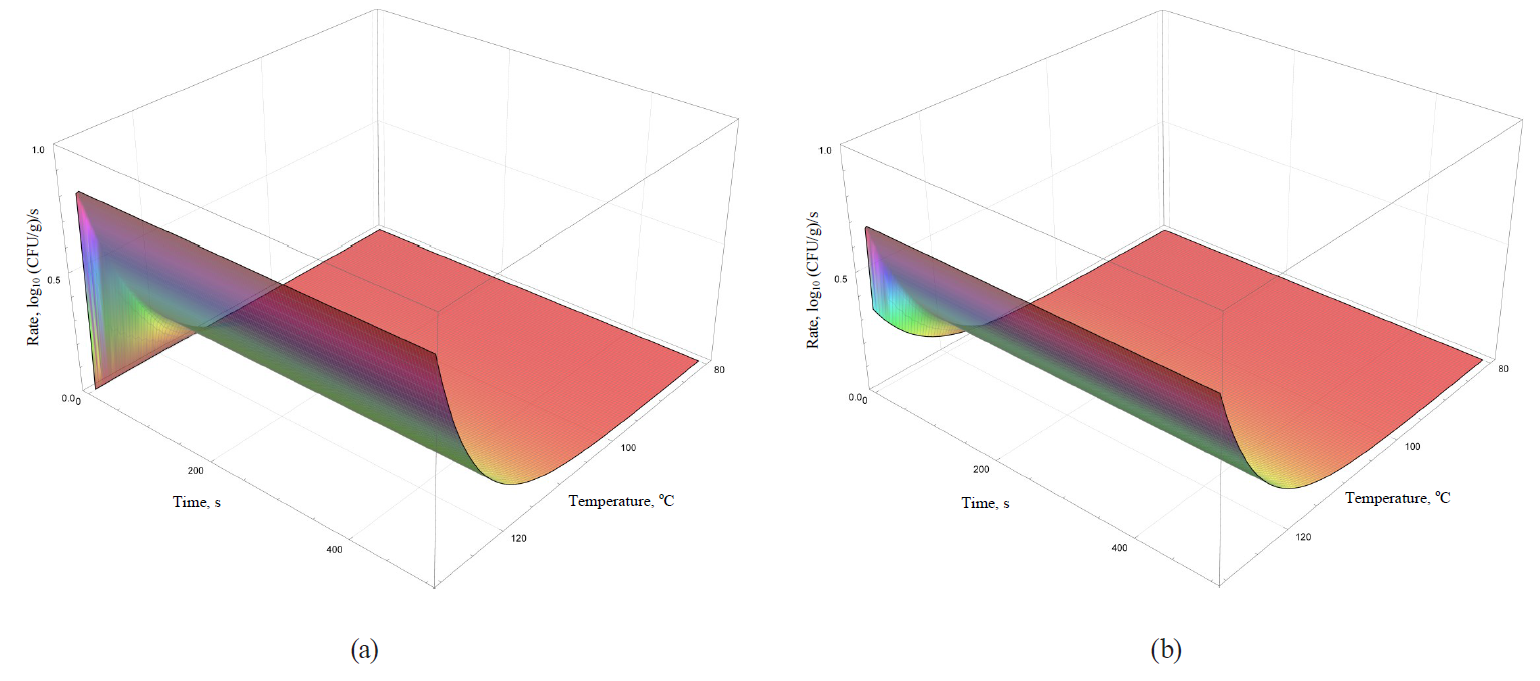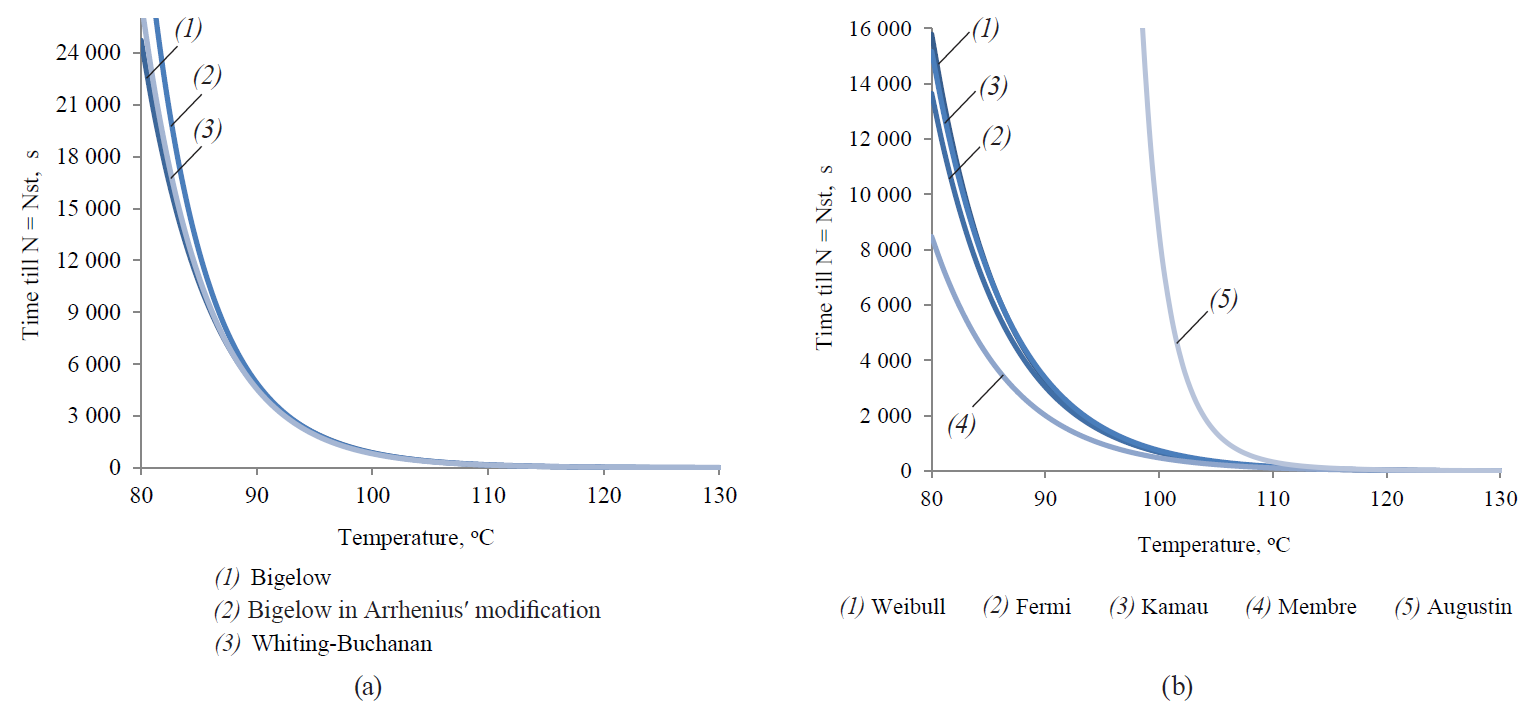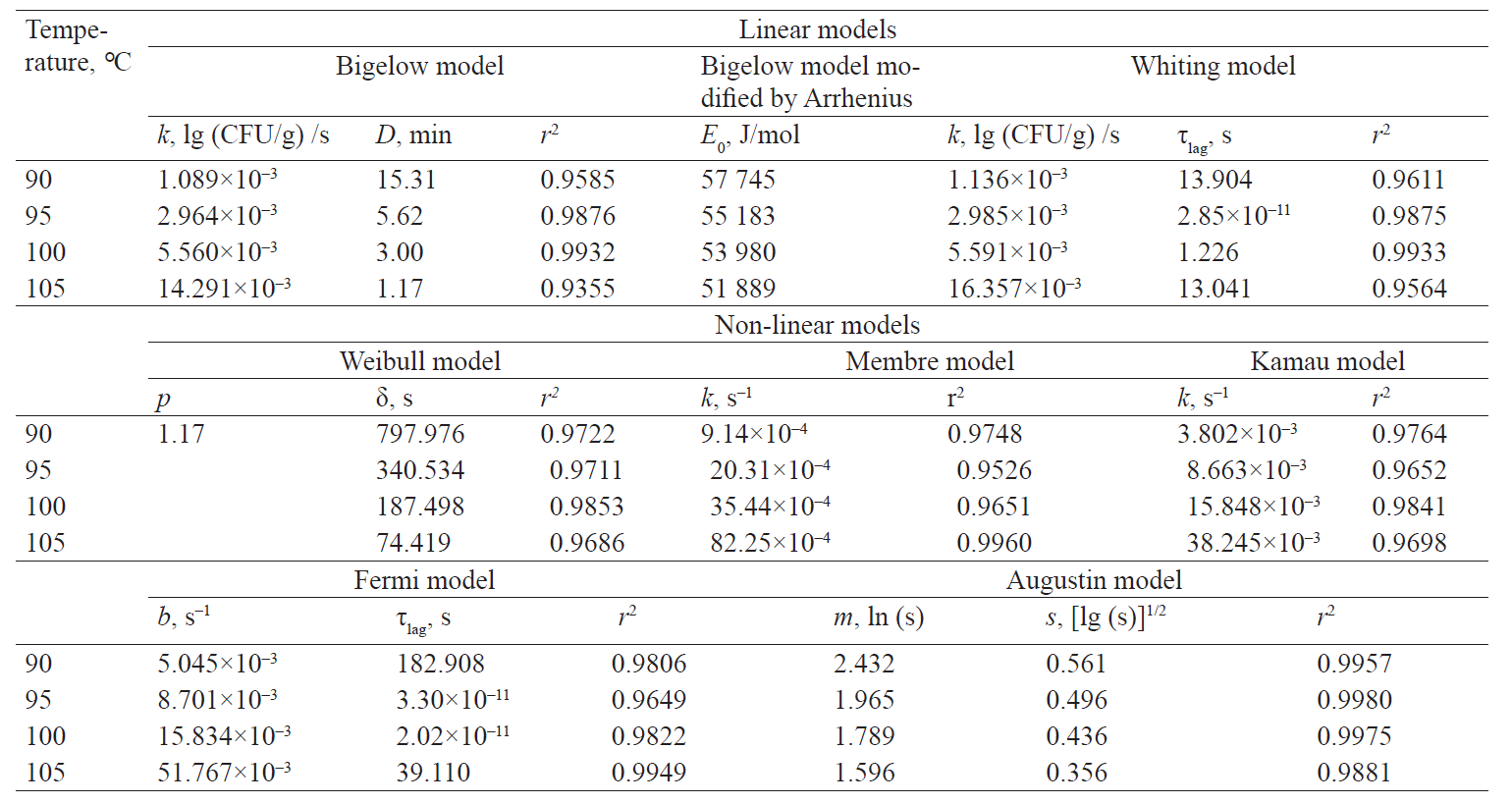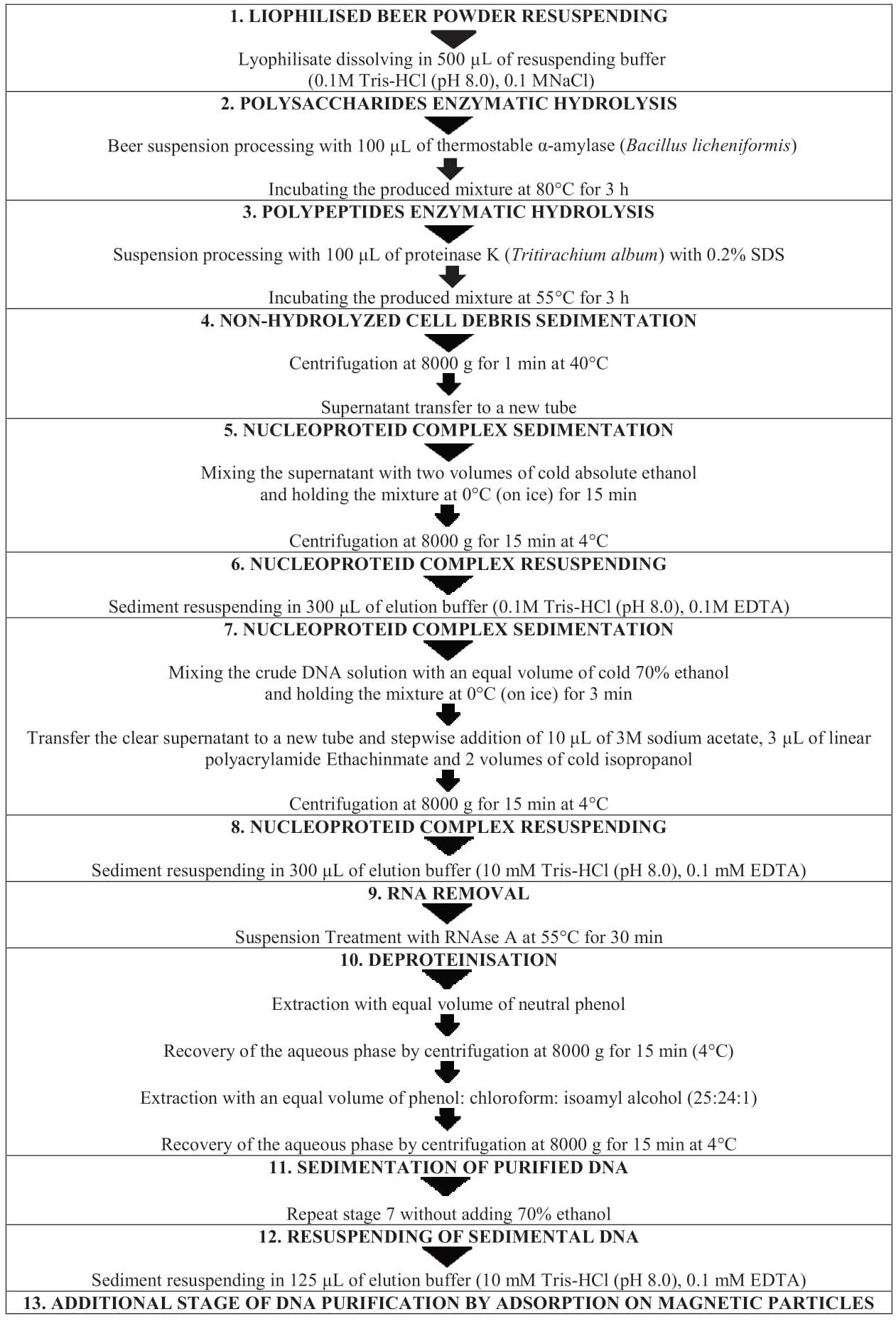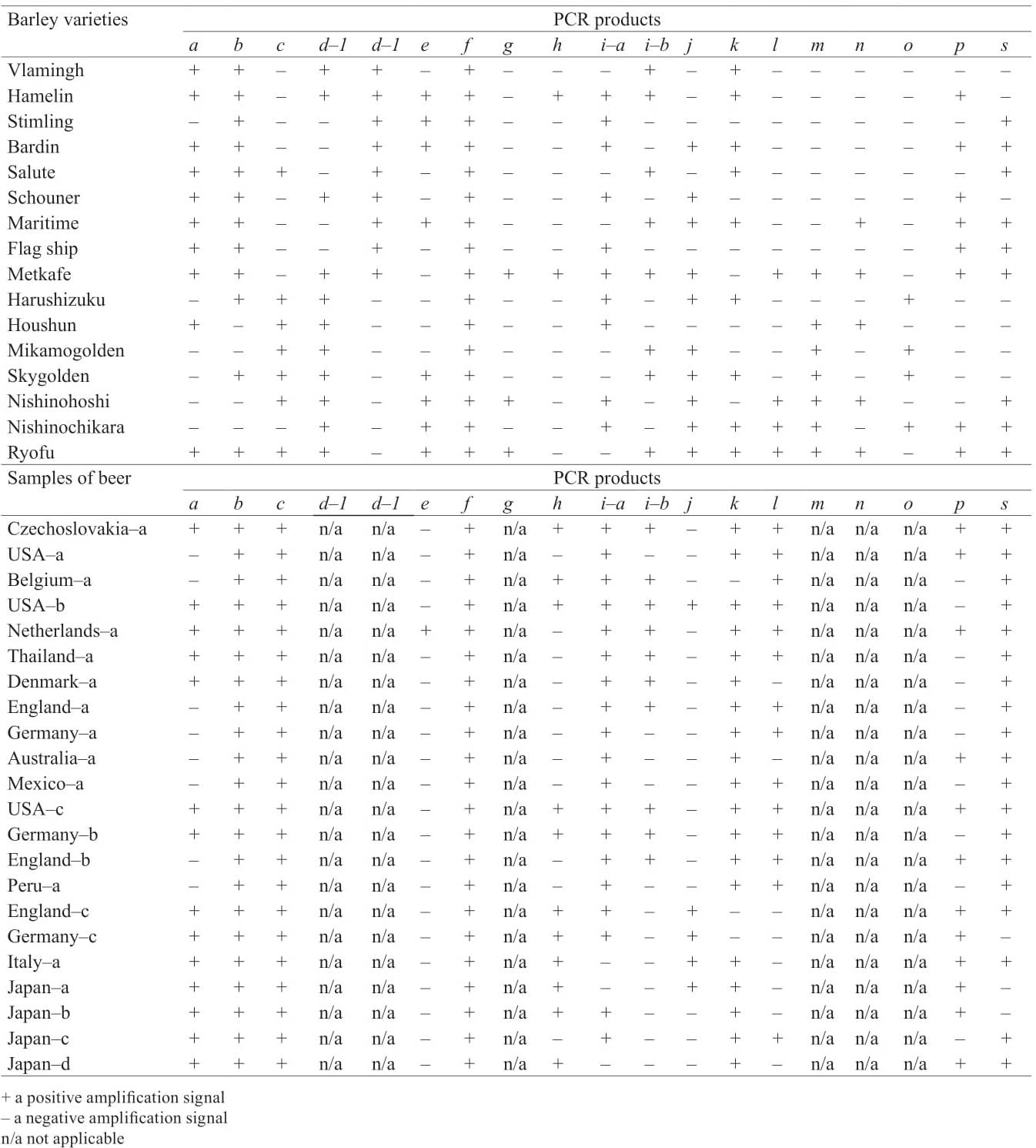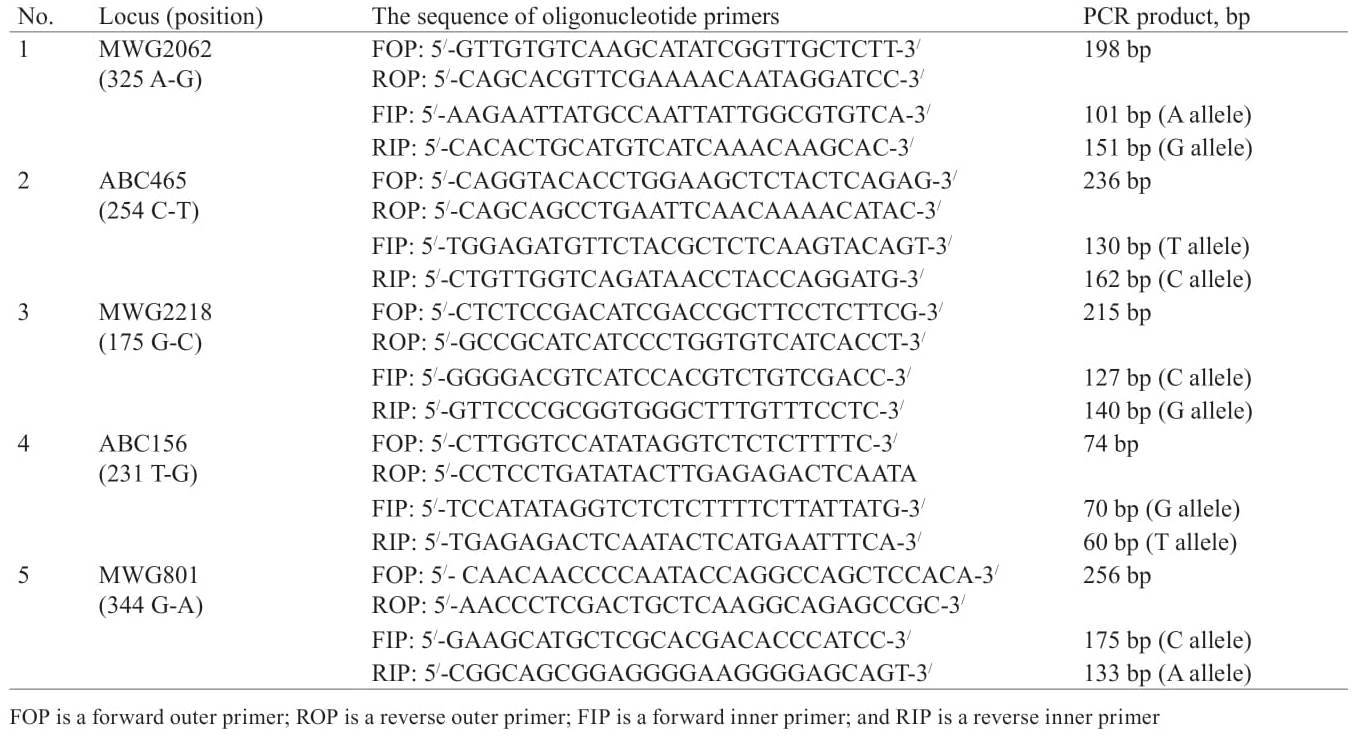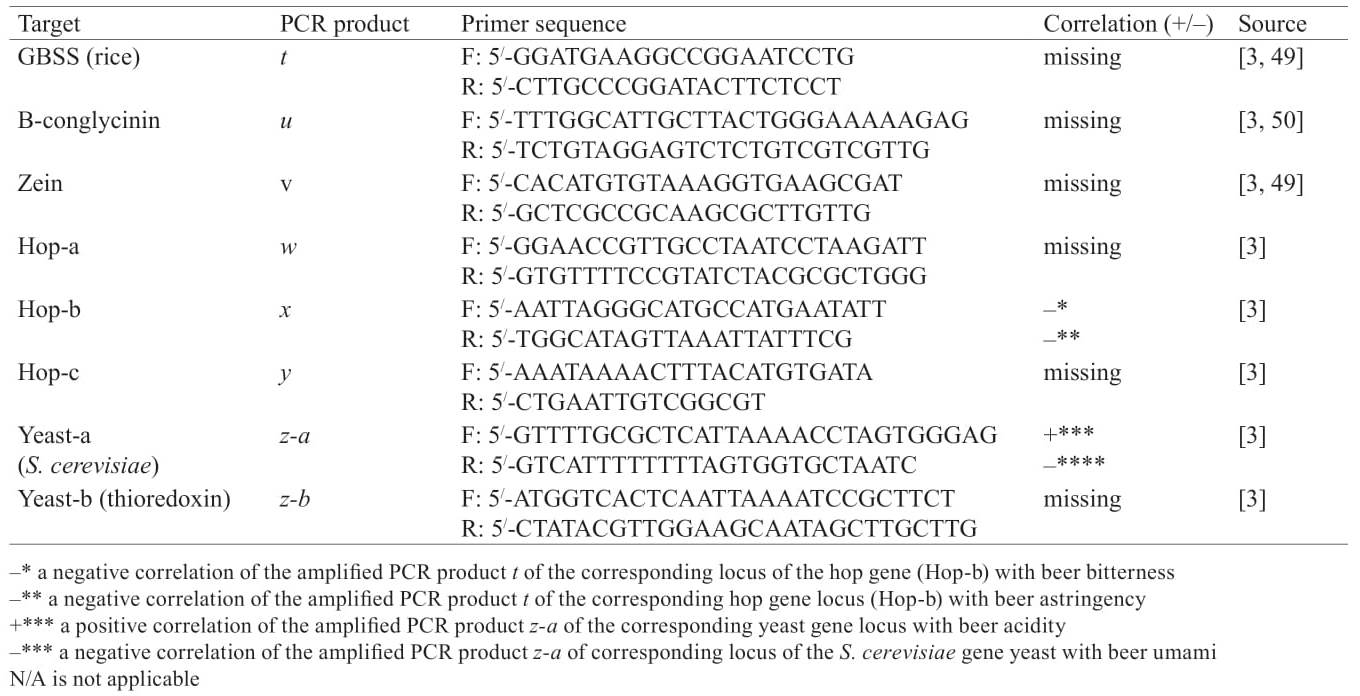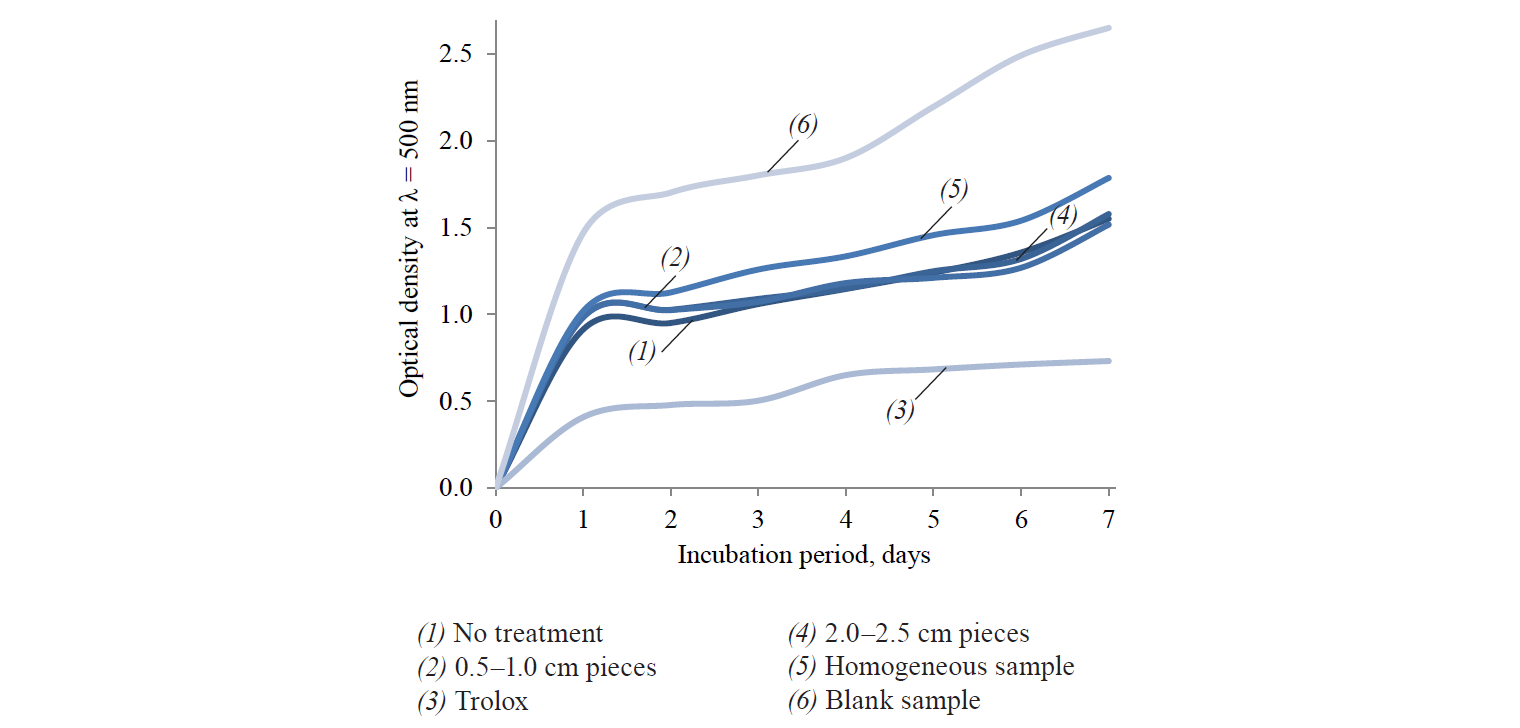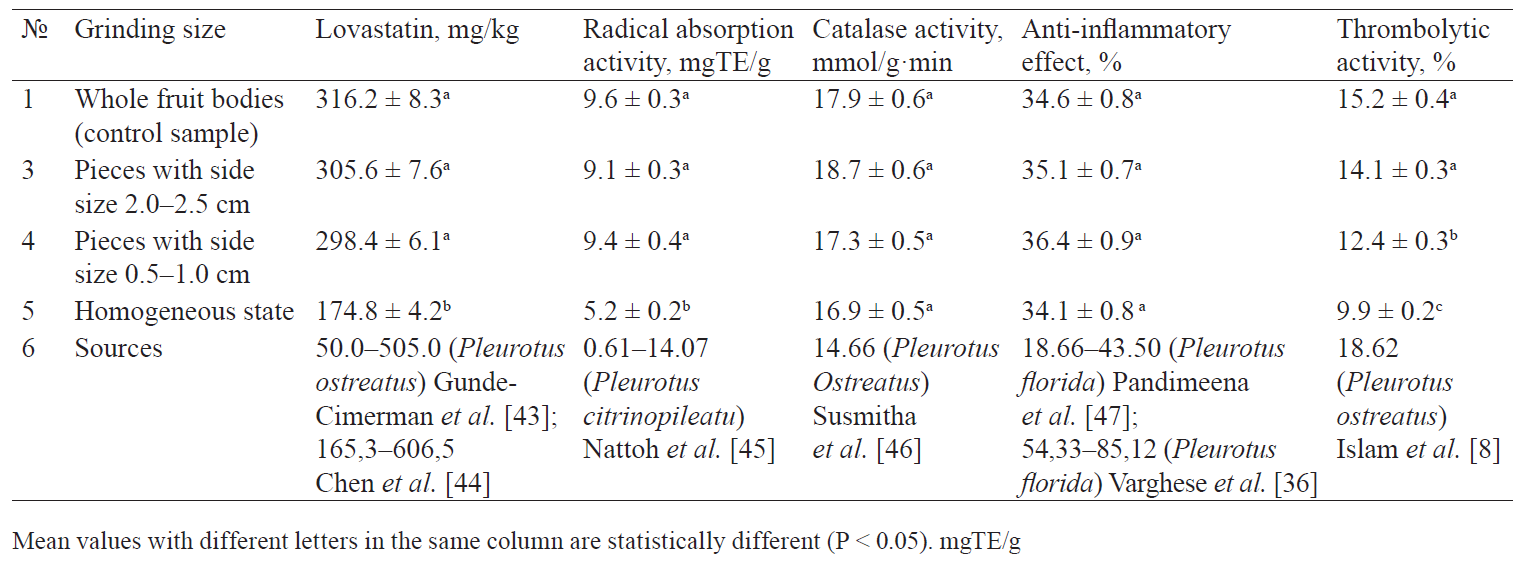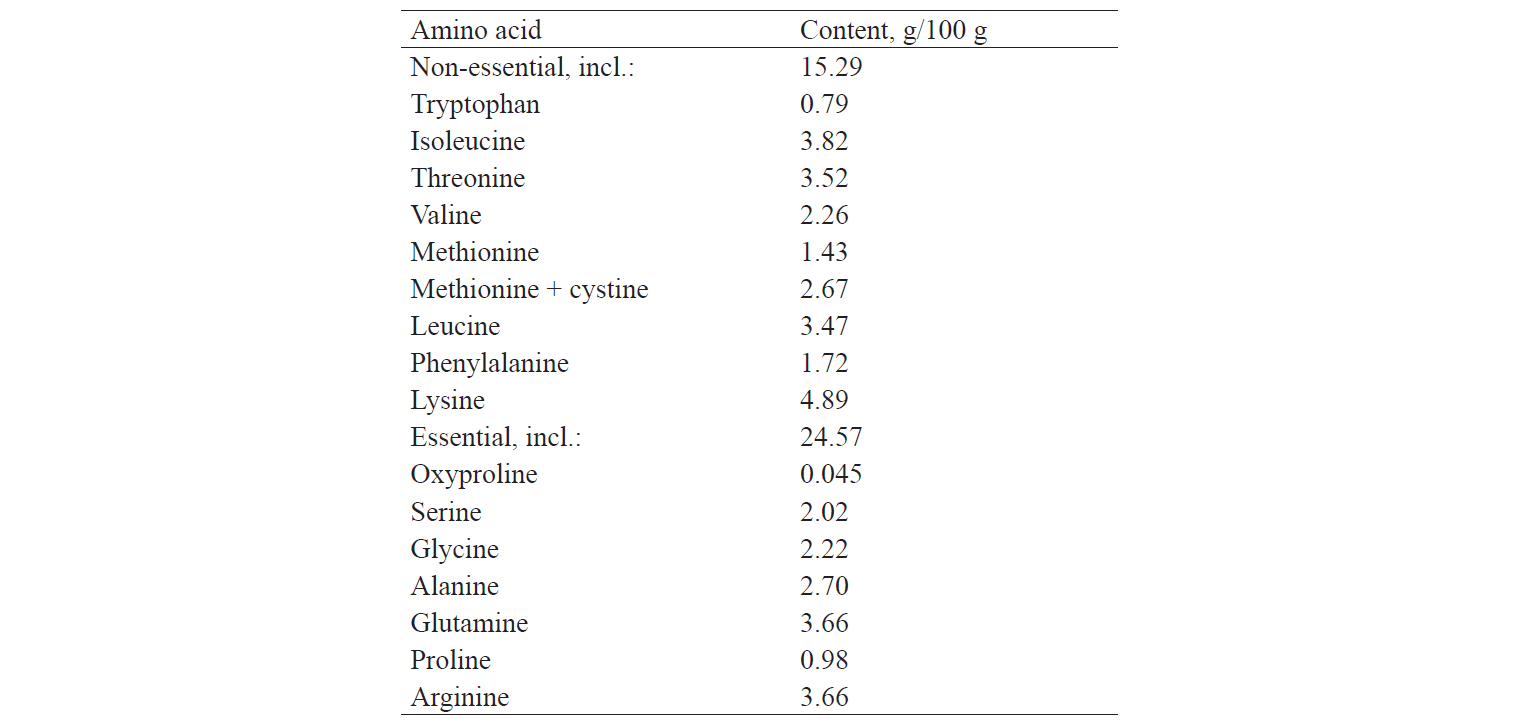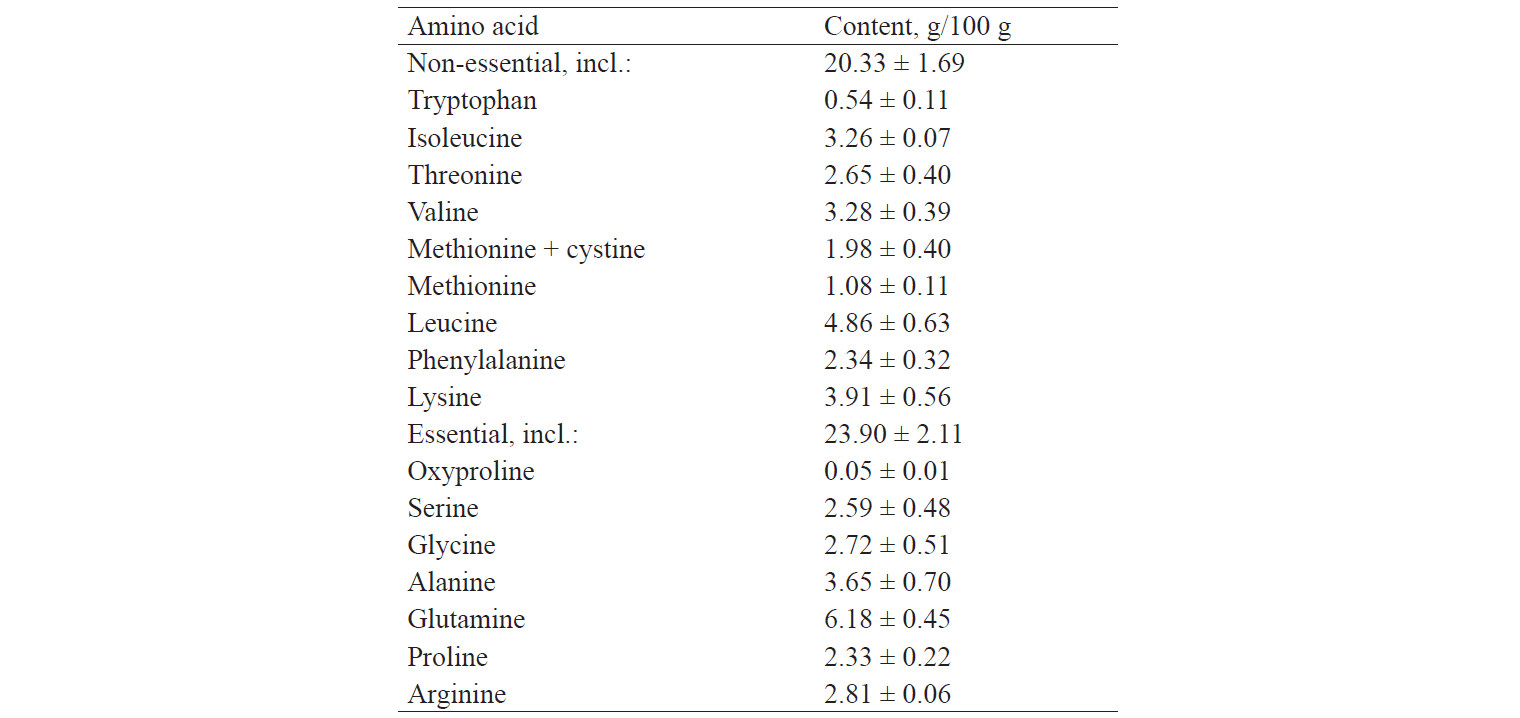Том 7, №2, 2019
12557
Аннотация
Таблицы и рисунки
A complex of amylases, proteases, and hemicellulases is known to enhance deep conversion of polysaccharides and proteins, especially in the processing of difficult-to-ferment raw materials, such as rye, providing grain wort with soluble carbohydrates, amino acids, and peptides. Grain is also a source of phosphorus, whose bioavailability can be increased by hydrolysing the grain with phytase-containing enzyme preparations. However, their catalytic action during the preparation of grain wort for alcohol production has hardly been studied. This study aimed to investigate the effect of a new complex phytasecontaining enzyme preparation on yeast metabolism and the efficiency of rye wort fermentation. The work was carried out in the Russian Research Institute of Food Biotechnology. The Glucavamorin complex enzyme preparations derived from recombinant strains were the object of our research. The preparations differed in the activity level of the main enzyme, lucoamylase, and minor hemicellulase enzymes, as well as in the presence of phytase. The results confirmed their biocatalytic ability to efficiently hydrolyse polymers of rye grain. An increased content of hemicellulases in Glucavamorin-Xyl improved the rheological properties of rye wort. The greatest effect was achieved with the phytase-containing Glucavamorin-Ply. This preparation improved the phosphorus nutrition of yeast, which increased its biomass by 30% and decreased the level of fermentation by-products by 18–20%. Alcohol yield tended to increase and its strength reached 10.5–10.9% vol. When using a phytase-containing enzyme complex, it was possible to reduce the amount of the main enzyme, glucoamylase, without causing the key fermentation indicators to degrade.
14534
Аннотация
Таблицы и рисунки
Many cheese manufacturers still have not utilized cheese whey that damages to the environment as it is directly been drained into waters. Cheese whey can be used as active packaging material to prolong the shelf-life of food products. Fermented cheese whey contains bioactive peptides which are able to improve the functional properties of cheese whey as an antimicrobial agent. The combination of cheese whey with polysaccharides, lipid, and other additional ingredients can improve the physical characteristics of the active packaging in the form of edible film. Around 20-45% of plasticizer will expose the film formed. Cheese whey with agro-industrial waste starch-based formulation can be used as an alternative way to produce an antimicrobial edible film as an active packaging. The film has shown acceptable physical characteristics and high antimicrobial activity, which makes it possible to extend the shelf life of food products. An advanced process, for example, the use of transglutaminase enzyme and Candida tropicalis mutant, is also effective. The result of that is the formation of the essential compound which can improve the active packaging quality. The utilisation of cheese whey and agro-industrial waste based on starch contributes significantly to the environmental conservation.
10394
Аннотация
Таблицы и рисунки
Water is the most crucial thing to mankind and so its contamination by various agencies is posing a threat to the natural balance. So, in the present work, the efficiency of various adsorbents derived from plant waste, to remove different dyes from aqueous solution was evaluated. Parameters for study were contact time, concentration and pH. Various combinations of plant ashes were used for the study. It was found that adsorbent prepared from the combination of orange peels, pomegranate and banana peels ashes, exhibited good adsorption capacity for methylene blue, congo red and crystal violet. All these dyes were completely removed from the aqueous solution while methyl orange was not removed. Congo red was removed completely within 40 min of contact with the adsorbent while methyl orange took 3 hrs to be removed to the extent of 48% only. The adsorption coefficient of congo red was found to be 2.33 while value for methylene blue and crystal violet was 1 and 1.66 respectively. The characterization of adsorbent was done by Scanning Electron Microscopy and IR spectroscopy. SEM image revealed the surface of adsorbent to be made of differential pores. From the results it became evident that the low-cost adsorbent could be used as a replacement for costly traditional methods of removing colorants from water.
10631
Аннотация
Таблицы и рисунки
The paper describes changes in thermal properties in the process of freezing of marine raw materials. The study objects were the skin of giant octopus (Octopus dofleini L.), pallium of Pacific squid (Todarodes pacificus L.), milt of Pacific herring (Clupea pallasii L .), a nd muscle t issue of Japanese c ucumaria (Cucumaria japonica L.). The mathematical relations of the studied thermal parameters allowing the calculation of specific heat capacity, thermal conductivity coefficient and tissue density of the studied objects in the process of freezing were obtained. It was found that the change in the total specific heat capacity during the freezing of all the objects under study was of the same type: first, this figure increases due to the intensive ice formation in the tissues of hydrobionts, and then decreases due to a significant decrease in the content of the liquid aqueous phase. The values of the total specific heat capacity before the freezing of seafood were determined (kJ/kg·K): 4.26 for squid, 3.58 for milt of Pacific herring, 3.66 for octopus skin, and 3.95 for the shell of cucumaria. It was revealed that an increase in the amount of frozen out water decreased the density of samples of frozen raw materials. This was due to the high (77.4–88.9%) content of water, turning into ice, which has a lower density index. The values of hydrobionts’ tissue density before freezing were obtained ( 0 ρ , kg/m3): 1226.74 for squid, 1209.6 for milt of Pacific herring, 1128.55 for octopus skin, and 031.26 for shell of cucumaria. It was established that the thermal conductivity of the hydrobiont tissue samples in the process of freezing increased with the growth of the proportion of frozen out water contained, approaching the thermal conductivity of ice. The calculated values of thermal conductivity coefficient of seafood tissue prior to freezing equal (W/m·K): 0.52 for squid, 0.47 for milt of Pacific herring, 0.63 for octopus skin, and 0.53 for cucumaria. The obtained thermal characteristics values of the objects studied are recommended for use in technical and technological calculations of aquatic biological resources cooling treatment processes.
30153
Аннотация
Таблицы и рисунки
A poor consumption of important nutrients triggered a public interest in functional foods that contain easy-to-digest proteins. The present research features fractionation, mechanical activation, and enzymatic hydrolysis of pea protein. According to modern chemical methods, the protein content in the original pea biomass was 24.3% and its molecular weight distribution (MWD) was 5–135 kDa. Fractionation, or protein displacement, resulted in four fractions of biopolymers with different chemical composition, i.e. a different content of protein and carbohydrate molecules. The paper introduces some data on the enzymatic transformations of the substrate. A set of experiments made it possible to define the optimal conditions for the mechanical activation of pea biomass with proteolytic enzymes. The enzymes were obtained from Protosubtilin G3x, a complex enzyme preparation. When the substrate and the enzymes were mechanically activated together, it produced mechanocomposite, an intermediate product with increased reactivity. It increased the specific surface area by 3.2 times and doubled the crystallinity of the substrate. As a result, the rate and yield of the subsequent enzymatic hydrolysis increased from 18% to 61%. The study determined the capacity of the substrate in relation to the enzyme preparation. Under optimal conditions, the pea hydrolysis destroyed protein molecules within two hours. After four hours of hydrolysis, no changes were detected. A polyacrylamide gel electrophoresis revealed non-hydrolysed protein molecules with MW ≈ 20 kDa. Presumably, they corresponded with legumin, which is resistant to neutral and alkaline proteases. The resulting hydrolysates were spray-dried to test their potential use as a food component. The product obtained by spray-drying had a monomodal distribution of particle sizes of spherical shape with adiameter of 5–20 μm.
12962
Аннотация
Таблицы и рисунки
Safe and healthy nutrition has a beneficial effect on human well-being. Various foods, such as berries, are known to inhibit cancer-promoting pre-proliferative signals. Among European fruit and berry crops, raspberries demonstrate one with the widest ranges of biologically active substances. Extraction remains a reliable method of obtaining biologically active substances from plant materials. The research objective was to obtain a semi-finished raspberry product by using microwave and ultrasonic processing and to study its antioxidant, anti-carcinogenic, sensory, physico-chemical, and microbiological properties. The raspberry extracts were obtained by maceration, ultrasound treatment, and microwave processing. After that, the samples underwent a comparative analysis of their antioxidant properties. The ultrasonic method gave the best results. A set of experiments made it possible to define the optimal technological modes for the extraction process: ethanol = 50%, ultrasonic radiation = 35 kHz, temperature = 40 ± 5°C, time = 120 min, water ratio = 1:10. A set of experiments on cell cultures demonstrated that the raspberry extract was able to reduce the expression of the anti-inflammatory COX-2, iNOS, and IL-8 genes. Hense, we recommend further studies of the effect of the raspberry extract on the induced expression of COX-2, iNOS, and IL-8. In addition, its anticarcinogenic properties have to be studied in vivo.
15800
Аннотация
Таблицы и рисунки
Flax seeds are an excellent source of polyunsaturated fatty acids and high-grade protein. They are also rich in non-starch polysaccharides that are concentrated in their mucus cells. Flaxseed polysaccharides are soluble dietary fibres, which makes them an indispensable functional food ingredient. They can also serve as an additive, thus improving the structure of food, e.g. as a stabilizer, structure former, water and fat retention agent, etc. According to various researches, the functional and technological properties of polysaccharide flaxseed products are largely determined by the ratio of polysaccharide fractions and protein content, which depend on the production process. This research featured the effect of the method of obtaining flaxseed polysaccharide products on the protein content. The study employed chemical analysis and attenuated total internal reflection infrared spectroscopy (ATR-IR). The protein polysaccharide products under analysis were obtained by water extraction from two varieties of whole flax seed (Russia), under various conditions of treatment, cleaning, and fractionation. The conditions included pH, temperature, and process time. During water extraction of whole flax seeds, polypeptide-containing polysaccharide complexes were removed from the seed coats. The number, composition, and binding force between the peptide fragments and the polysaccharide matrix depended on the technological parameters of the process. The polysaccharide products were tested for total protein content. The results were consistent with the band intensity in the range of 1700–1500 cm–1, where protein carbonyl groups are usually manifested.
10371
Аннотация
Таблицы и рисунки
The research featured various types and strains of lactic acid bacteria (LAB) and yeast. The research objective was to study their ability to utilize β-lactoglobulin during sourdough fermentation. The present paper also described the effect of sourdough fermentation and baking on β-lactoglobulin degradation. A set of experiments with various types and strains of LAB showed that β-lactoglobulin decreased in gluten-free sourdough with 30%, 60%, and 90% of skimmed milk powder (SMP). L.plantarum E36 demonstrated the highest biodegradation of β-lactoglobulin (by 53%) with SMP = 30%. L.helveticus ATCC8018T showed the lowest content of β-lactoglobulin with SMP = 60% and 90%: the content fell by 48% and 40%, respectively. The largest decrease in the content of β-lactoglobulin was observed in the sourdough with Saccharomyces cerevisiae 17 (by 28–42%) and Candida milleri Pushkinsky (by 25–41%). The content of total protein increased, which was not associated with yeast biomass growth. The content was determined after fermentation in sourdoughs with SMP = 60% and 90% using a bicinchoninic acid reagent kit. The content of β-lactoglobulin in the control and experimental samples did not exceed 1 μg/g in the finished bakery products. This fact indicated a significant effect of thermal treatment on β-lactoglobulin degradation in baking. Thus, temperature processing (baking) had a greater impact on the destruction of β-lactoglobulin than enzymatic processing (fermentation).
8879
Аннотация
Таблицы и рисунки
The present research employed a convergent approach and cognitive methodology to define the upgrade options in the sphere of domestic dairy industry according to the principles of the 5th technological paradigm. The principles include biological nanomembrane cluster technologies with a complete production cycle. The paper offers a forecast for the 6th technological paradigm, which presupposes picotechnology for the production of milk derivatives, such as lactose hydrolysates, lactulose, microparticulate proteins, peptides, and amino acid pool. The principle makes it possible to return secondary dairy raw materials into the technological cycle. These significant resources include low-fat milk, buttermilk, and especially whey, which can be used to produce functional foods for various population groups, as well as new generation forage resources. From the point of view of logistics, the modern dairy industry should employ a digital and robot-aided non-waste production scheme. Thus, all dairy raw materials should be considered as natural clusters according to the nature-formed biotechnological system (BTS). These clusters are lipids (fats), nitrogencontaining substances (proteins), carbohydrates (lactose), minerals (salt), biologically active substances, and water. As an idealised model of agricultural raw material, milk is extremely complex. Its chemical composition includes more than 2000 constituents and 100000 molecular structures. In addition, dairy architectonics is also extremely complex: milk is suspension, emulsion, and solution, concurrently. Finally, milk possesses unusual physicochemical, osmophoric, structural-mechanical, bio-thermodynamic, and other characteristics. We conducted a long-term systematic analysis and developed a scheme that can help the domestic diary industry to adapt safely to the new technological paradigm. The scheme takes into account various factors, such as limited traditional dairy resources, Russia’s accession to the WTO, and the globalisation of the world dairy market. Our research team belongs to the leading federal scientific school ‘Living Systems’ (No.7510.2010.4) developed by the North Caucasus Federal University (Russia).
13663
Аннотация
Таблицы и рисунки
Essential oils are known to be a natural preservative due to their antimicrobial and antioxidant properties. The aim of this study was to evaluate an effect of thyme and cumin essential oils (EOs) in combination with air packaging and vacuum packaging on the shelf life of burgers from surimi and chicken meat. The study was conducted at 2°C for 27 days. We tested four groups of samples: (a) burgers in air package, (b) burgers with cumin and thyme EOs in air packaging, (c) burgers in vacuum packaging, and (d) burgers with cumin and thyme EOs in vacuum packaging. The greatest effect (P < 0.001) on the chemical and microbiological characteristics of the novel burgers displayed burgers with EOs of thyme and cumin packaged under vacuum. It can be explained by synergistic effect, which made it possible to extend the shelf life of the burgers. These results allowed us to suggest that surimi could be used as a basic ingredient in burgers production.
11162
Аннотация
Таблицы и рисунки
In this study, the physicochemical and sensory properties of kolompeh containing black caraway and sesame oil were investigated. Black caraway extract (BCE), encapsulated black caraway extract (EBCE), and black caraway powder (BCP) were added to kolompeh and compared to the sample without black caraway (FBC). All products contained sesame oil and were compared to control (without sesame oil). Among the samples, kolompeh with encapsulated extract demonstrated a higher oxidative stability (24.37 h), with a high IC50 of black caraway extract (124.1 μg·mL–1). In addition, the emulsion exhibited size distribution between 3.20 and 8.51 μm, and Fourier transform infrared spectroscopy confirmed the well encapsulated extract. Gas chromatography identified oleic and linoleic acids as the main fatty acids in kolompeh with the black caraway encapsulated extract. Although, there were no significant differences in the colour parameters (L*, a* and b*) of the samples, kolompeh with EBCE had the highest score given by panelists. The control had a higher (2466 g) hardness compared to kolompeh containing EBCE (1688 g) at the end of storage. Therefore, the encapsulated extract of black caraway not only had no an adverse effect on the properties of kolompeh but also improved its quality.
8664
Аннотация
Таблицы и рисунки
Napa cabbage waste contains an organic component, cellulose, which can be utilised as an ingredient for cellulose-degrading enzyme production with the help of indigenous yeast. The aim of the research was to identify and characterise potential indigenous yeast isolated from napa cabbage waste, which has cellulose-degrading activity. Indigenous yeast were isolated and characterised using the RapID Yeast Plus System, then turbidity was used to determine the yeast total population. Indigenous yeast was grown at napa cabbage waste at 27, 37, and 40°C for three days, and cellulose-degrading activity was determined by the Dinitrosalicylic Acid (DNS) method. The potential yeast isolate with the highest cellulose-degrading activity was identified by a sequence analysis of the rRNA gene internal transcribed spacer (ITS) region with using primers ITS1 (5′-TCCGTAGGTGAACCTGCGG-3′) and ITS4 (5′- TCCTCCGCTTATTGATATGC-3′). The results were compared to the GenBank database using the Basic Local Alignment Search Tools/BLAST algorithm. Three species of indigenous yeast were isolated from napa cabbage waste (S2, S6, and S8). S8, incubated at 37ºC for three days, demonstrated the highest cellulose-degrading enzyme activity (1.188 U/mL), with the average activity of 0.684U/mL. Species identification results indicated that the S8 isolate had a 100% similarity to Pichia fermentans UniFGPF2 (KT029805.1).
12859
Аннотация
Таблицы и рисунки
Fish contamination by heavy metals, even at low levels, has an adverse effect on human health. Mercury (Hg), cadmium (Cd), and lead (Pb) are the most common heavy metals that contaminate sea foods. Rainbow trout is a fish species which is widely cultured in fresh water regions, e.g. in Yasuj, southwest of Iran. Heavy metal contamination was measured in three different culture areas (A, B, and C), with three different feed pellets used in Yasuj farms (I, II, and III). The sampling was conducted during February-April 2018 and the metals were measured using cold vapour atomic absorption with a Perkin Elmer 4100. The mean values of Hg, Cd, and Pb levels in the muscular tissue of the samples were 0.022, 0.105, and 1.07 mg/kg, respectively. Concentrations of Hg and Cd in edible tissues of rainbow trout were lower than the permitted values set by the WHO, the FDA, and the EC. The samples fed on mixture pellets III showed a significantly higher Hg content and a lower concentration of Cd in the muscle tissue compared to those given feed mixtures I and II (P < 0.05). Pearson correlation tests revealed significant correlations between the Cd and Pb concentrations and the weight of the fish samples (r = –0.519, r = –0.580). The lowest Cd concentration (0.076 mg/kg–1) was found in site A located close to the spring and not polluted by sewage from urban or rural areas. The study showed a correlation between the concentration of heavy metals in the fish samples and their weight, the degree of pollution, and the feeding mixture used in the farms.
10137
Аннотация
Таблицы и рисунки
The paper introduces a multi-criteria assessment system that can be used for sensory analysis by fuzzy-Eckenrode and fuzzy-TOPSIS methods. Respondents evaluated the sensory characteristics of Cucumis melo (L.), which included aroma, colour, taste, texture, and overall acceptance, after six days of storage. The product was stored under three different temperature conditions: 10°C (B1), 14°C (B2), and room temperature (27–30°C) (B3). The product was also stored at three types of packaging: unpackaged stem (A1), packaged fruit with one layer of banana stem (A2), and packaged fruit with two layers of banana stem (A3). The best result was demonstrated by the Cucumis melo that was stored at 14°C and packaged in a two-layered banana stem (A3B2). Both fuzzy-Eckenrode and fuzzy-TOPSIS method provided an easy, fast, and unambiguous calculation of multi-criteria sensory assessment.
13939
Аннотация
Таблицы и рисунки
Microbial death kinetics modelling is an integral stage of developing the food thermal sterilisation regimes. At present, a large number of models have been developed. Their properties are usually being accepted as adequate even beyond boundaries of experimental microbiological data zone. The wide range of primary models existence implies the lack of universality of each ones. This paper presents a comparative assessment of linear and nonlinear models of microbial death kinetics during the heat treatment of the Alicyclobacillus acidoterrestris spore form. The research allowed finding that single-phase primary models (as adjustable functions) are statistically acceptable for approximation of the experimental data: linear – the Bigelow’ the Bigelow as modified by Arrhenius and the Whiting-Buchanan models; and nonlinear – the Weibull, the Fermi, the Kamau, the Membre and the Augustin models. The analysis of them established a high degree of variability for extrapolative characteristics and, as a result, a marked empirical character of adjustable functions, i.e. unsatisfactory convergence of results for different models. This is presumably conditioned by the particularity and, in some cases, phenomenology of the functions themselves. Consequently, there is no reason to believe that the heat treatment regimes, developed on the basis of any of these empirical models, are the most effective. This analysis is the first link in arguing the necessity to initiate the research aimed at developing a new methodology for determining the regimes of food thermal sterilisation based on analysis of the fundamental factors such as ones defined spore germination activation and their resistance to external impact.
12238
Аннотация
Таблицы и рисунки
Beer DNA authentication is the process of authentication by identification of barley malt Hordeum vulgare or its substitutes, as well as hops and yeast. The method is based on molecular genetic analysis of residual quantities of nucleic acids extracted from the cellular debris of the final product. The aim of the study was to analyse scientific and methodical approaches to extraction of residual quantities of beer raw materials nucleic acids and beer DNA authentication for their later application in determining brewing products authenticity. The technological level discloses the method of DNA extraction from wines, modified for extraction of nucleic acids from beer samples. The method includes the following characteristic peculiarities: stage enzymatic hydrolysis of polysaccharides and polypeptides of dissolved lyophilisate, multiple sedimentation and resursuspension of nucleoproteid complex, RNA removal followed by DNA extraction by organic solvents, and additional DNA purification by magnetic particle adsorption. This review presents the analysis of genetic targets used as molecular markers for gene identification of malting barley varieties and beer DNA authentication. We also provided the interpretation of PCR analysis of Hordeum vulgare varieties and samples of commercial beer. Data on SSR- and SNP-markers of Hordeum vulgare nuclear DNA, used for barley varieties identification and potentially suitable for beer DNA authentication, are also presented. We also analysed genetic targets used in malting barley substitute detection, as well as hops and yeast identification in beer. Data on correlation of amplified DNA targets with beer quality indicators were systematised.
Effect of pre-treatment conditions on the antiatherogenic potential of freeze-dried oyster mushrooms
14576
Аннотация
Таблицы и рисунки
Oyster mushroom (Pleurotus ostreatus L.) is a valuable food product. It possesses an antiatherogenic potential, which has to be preserved during processing. The paper features the production of oyster mushroom sublimates. It focuses on such pre-treatment conditions as grinding, disinfection, and cryostabilisation, and their effect on the antiatherogenic potential of oyster mushrooms. A set of in vitro experiments was performed to measure the levels of lovastatin and antioxidant, catalase, anti-inflammatory, and thrombolytic properties. Various pre-treatment conditions proved to produce different effects on the biological activity of the freeze-dried oyster mushroom product. The best results were obtained after the mushrooms were reduced to pieces of 0.5 cm, underwent UV disinfection, blanched, treated with hot air, and cryostabilised with a 1.5% apple pectin solution. The best conditions for the antioxidant properties included ozonation, UV disinfection, and cryoprotection with pectin. The critical conditions for the antioxidant properties included homogenisation, blanching, and cryostabilisation with 10% solutions of sucrose and lactose. The catalase properties did not depend on the degree of grinding and were most pronounced after ozonation. The optimal conditions for the anti-inflammatory properties included UV disinfection and cryostabilisation with lactose. Ozonation proved to be critical for anti-inflammatory properties. The optimal conditions for thrombolytic properties included ozonation and cryoprotection with a 5% sorbitol solution, while hot air disinfection proved critical. Therefore, the research provided an experimental substantiation for individual pre-treatment conditions or their combinations that turn sublimated oyster mushrooms into a valuable functional product with antiatherogenic properties.
13262
Аннотация
Таблицы и рисунки
This paper is based on literature and our own studies of high-quality dietary fibres of various types, as well as food materials and products. It provides data on the physiological features, functional and technological properties of dietary fibre, as well as its main uses in food technology. In particular, we assessed the texture of dietary fibre, constructed rheograms for the flow of fibre-water systems, and analysed the histological structure. Our results form a scientific basis for the development of safe meat products of high quality and healthy diets. We established specific structural characteristics, properties, and rheological behaviour of various dietary fibres, as well as their advantages. We found that potato fibres demonstrated greater uniformity in texture and rheology, compared to wheat fibres. Wheat fibres had a clear phase structure (fibre/water), whereas potato fibres showed significant hydrophilic and structuring properties, attributing them to colloidal fibres. The established patterns contribute to the rational selection of dietary fibre to create products with desired properties. In particular, we developed a technology for a restructured poultry product with preventative properties using soluble and insoluble dietary fibres. The paper provides data on the product’s safety indicators, nutritional and biological values, as well as functional, technological, microbiological, and other properties. We also conducted microstructural studies to analyse the uniformity of distribution of the curing mixture in the developed meat product. We concluded that using potato and wheat fibres can expand the range of meat products in line with the concepts of rational and healthy nutrition, as well as increase the product’s succulence and prevent syneresis and mass loss.
10164
Аннотация
Таблицы и рисунки
Poultry meat is a valuable source of protein for human consumption. It plays an important role in countries with poor ungulate meat production, including the Republic of Kazakhstan. The intake of fibre by the Kazakh population also remains low, while the intake of saturated fatty acids is excessive. Therefore, it is recommended to combine meat with plant products, e.g. soya flour. In the present research, we developed and evaluated a new meatball product containing different amounts of soya flour. The meatballs proved to be a semi-finished high-protein product. They also demonstrated a good fatty acid and mineral profile. The product with 30% of soya flour showed the best results: 27% of protein, low content of saturated fatty acid, and shelf life of 48 h. To extend the shelf life of the meatballs under refrigerator conditions, new disinfection methods should be developed.
11643
Аннотация
Таблицы и рисунки
The increasing shortage of fossil hydrocarbon fuel dictates the need to search for and develop alternative energy sources, including plant biomass. This paper is devoted to the study of the Miscanthus plants biomass potential and the analysis of technologies of its processing into products targeted at bioenergy, chemistry, and microbiology. Miscanthus is a promising renewable raw material to replace wood raw materials for the production of chemical, fuel, energy, and microbiological industries. Miscanthus is characterised by highly productive (up to 40 tons per one hectare of dry matter) C4-photosynthesis. Dry Miscanthus contains 47.1–49.7% carbon, 5.38–5.92% hydrogen, and 41.4–44.6% oxygen. The mineral composition includes K, Cl, N and S, which influence the processes occurring during biomass combustion. The total amount of extractives per dry substance lies in the range of 0.3–2.2 % for different extraction reagents. Miscanthus has optimal properties as an energy source. Miscanthus × giganteus pellets showed the energy value of about 29 kJ/g. For the bioconversion of plants into bioethanol, it is advisable to carry out simultaneous saccharification and fermentation, thus reducing the duration of process steps and energy costs. Miscanthus cellulose is of high quality and can be used for the synthesis of new products. Further research will focus on the selection of rational parameters for processing miscanthus biomass into products with improved physical and chemical characteristics: bioethanol, pellets, industrial cellulose, bacterial cellulose, carbohydrate substrate.
11038
Аннотация
Таблицы и рисунки
Using non-traditional raw meats is a promising direction of the meat industry. They include venison and meat from yak, elk, red deer, rabbits, ostriches, upland game, and musk-ox. The study aimed to compare the biochemical and physicochemical parameters of the meat from reindeer, elk, and musk-ox living in the Yenisei North. We found that these meats had a high biological value. First, we studied the composition of amino acids, fatty acids, vitamins, and minerals in the meat from reindeer of various sex and age groups. We found that the difference between the contents of unsaturated and saturated fatty acids and their ratio in adult and young reindeer males was in favour of young males, while these parameters did not differ in the meat from reindeer females of various age groups. Nevertheless, reindeer females had a higher content of saturated acids compared to reindeer male meat. Further, we studied the composition of amino acids, fatty acids, vitamins, and minerals in Taimyr elk and musk-ox meats. According to the results, the contents of essential amino acids in Taimyr elk and musk-ox meats were 60% and 55%, respectively. In both cases, the dominant amino acids were leucine, isoleucine, lysine, and valine. The study revealed the benefits of using indigenous meats in sausage production. Finally, we showed the influence of starter cultures on the quality of dry sausages and developed formulations of venison-based sausages.
18535
Аннотация
Таблицы и рисунки
In tropical regions coconut is the tree of great significance: it provides millions of people with food, employment, and business opportunities. The fruit is referred to as ‘miracle fruit’ due to its inherent rich profile of macro- and micro-nutrients for human nutrition and health. Different products, such as coconut water, milk, raw kernels, oil and desiccated coconut are commercially processed. Coconut flour is a byproduct of coconut milk and oil industry which is made from coconut meal leftover after processing. Being a rich source of dietary fibre and protein, it has found numerous applications in different functional foods. Coconut flour can be successfully incorporated into various food products, such as bakery, extruded products, snacks, and sweets. It has antidiabetic and anticancer effects, prevents cardiovascular diseases, and improves immune function. Coconut flour is also gluten-free and its nutritional composition is quite comparable to that of wheat flour. Gluten-free food products enriched with coconut flour are a healthy and viable option for the people with celiac disease. In this paper, we summarised the present use of coconut flour. There is an apparent need to convert the food processing byproducts into functional ingredients in order to implement their environment-friendly and efficient utilisation.
12889
Аннотация
Milk and dairy products are staple foods in the diet of all social groups. Plant additives are of multifunctional use in the dairy industry. Wild plants are a source of vitamins, minerals, and other biologically active substances. Due to these compounds, they improve digestion, cardiovascular activity, and emotional state. This review describes the latest trends in creating functional milk drinks enriched with plant components. They include drinks based on whole milk and cream, dairy by-products (whey, buttermilk), as well as fermented milk drinks with probiotic cultures (kefir, drinking yogurt). We found that aqueous extracts were most commonly introduced into milk raw materials. Fruits and berries were dried and added to milk raw materials in the powder form. Special attention was paid to ‘hairy roots’ as a promising technology for producing various functional foods. In addition to being economically viable, this technology can help us expand the range of plant materials with endangered species. Functional milk-based drinks enriched with plant extracts can improve the immune system and be used as part of supportive therapy. They are also suitable for daily use to replenish the balance of essential nutrients. These properties make their production a promising direction in the dairy industry.
7578
Аннотация
The Editorial Office of Foods and Raw Materials would like to report an error in the published paper ‘Optimisation of functional sausage formulation with konjac and inulin: using D-Optimal mixture design’. Foods and Raw Materials, 2019, vol. 7, no. 1, pp. 177–184. DOI: http://doi.org/10.21603/2308-4057-2019-1-177-184. The affiliation of Mojtaba Jafari should be changed from ‘Food Sciences and Technology Department, National Nutrition and Food Technology Research Institute, Faculty of Nutrition Sciences and Food Technology, Shahid Beheshti University of Medical Sciences, Tehran, Iran’ to ‘Department of Food Science and Technology, Faculty of Industrial and Mechanical Engineering, Islamic Azad University, Qazvin Branch, Qazvin, Iran’. We apologise to the author for any inconvenience caused by this mistake. The change does not affect the scientific results. The manuscript will be updated and the original will remain available on the article webpage.


